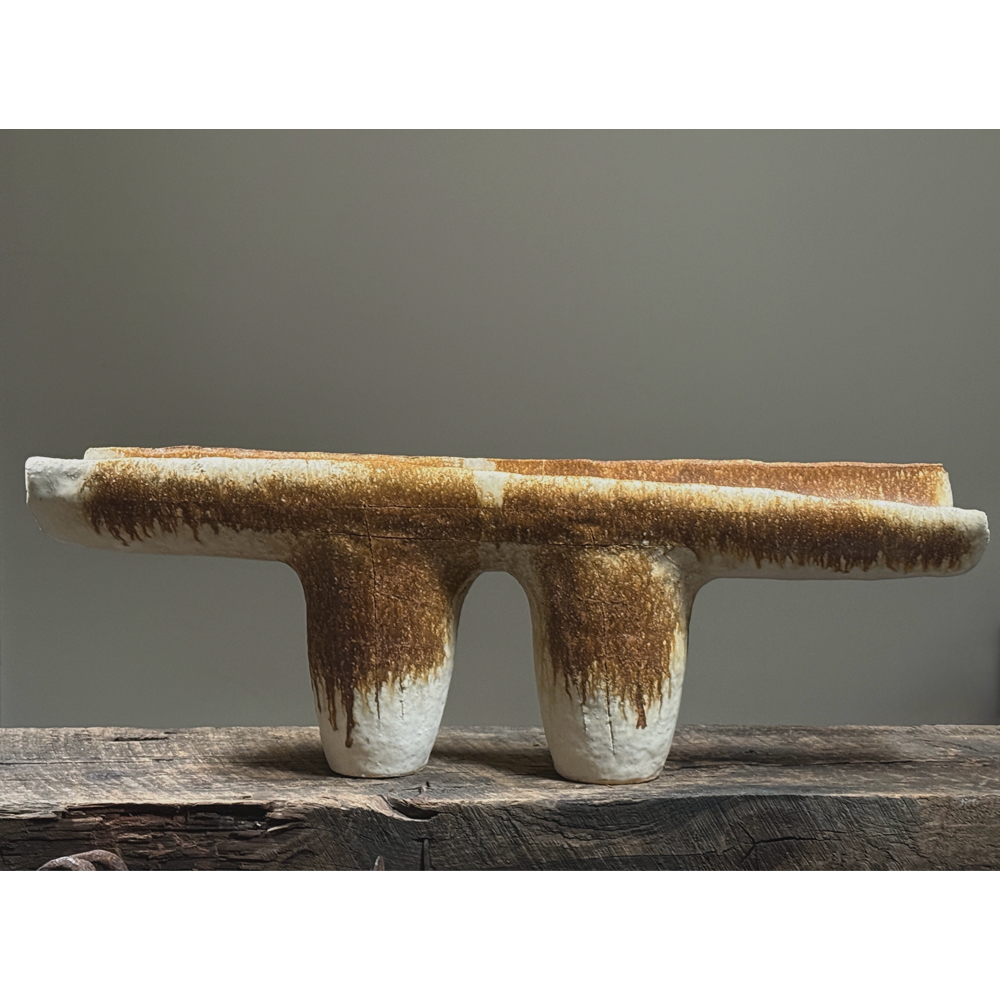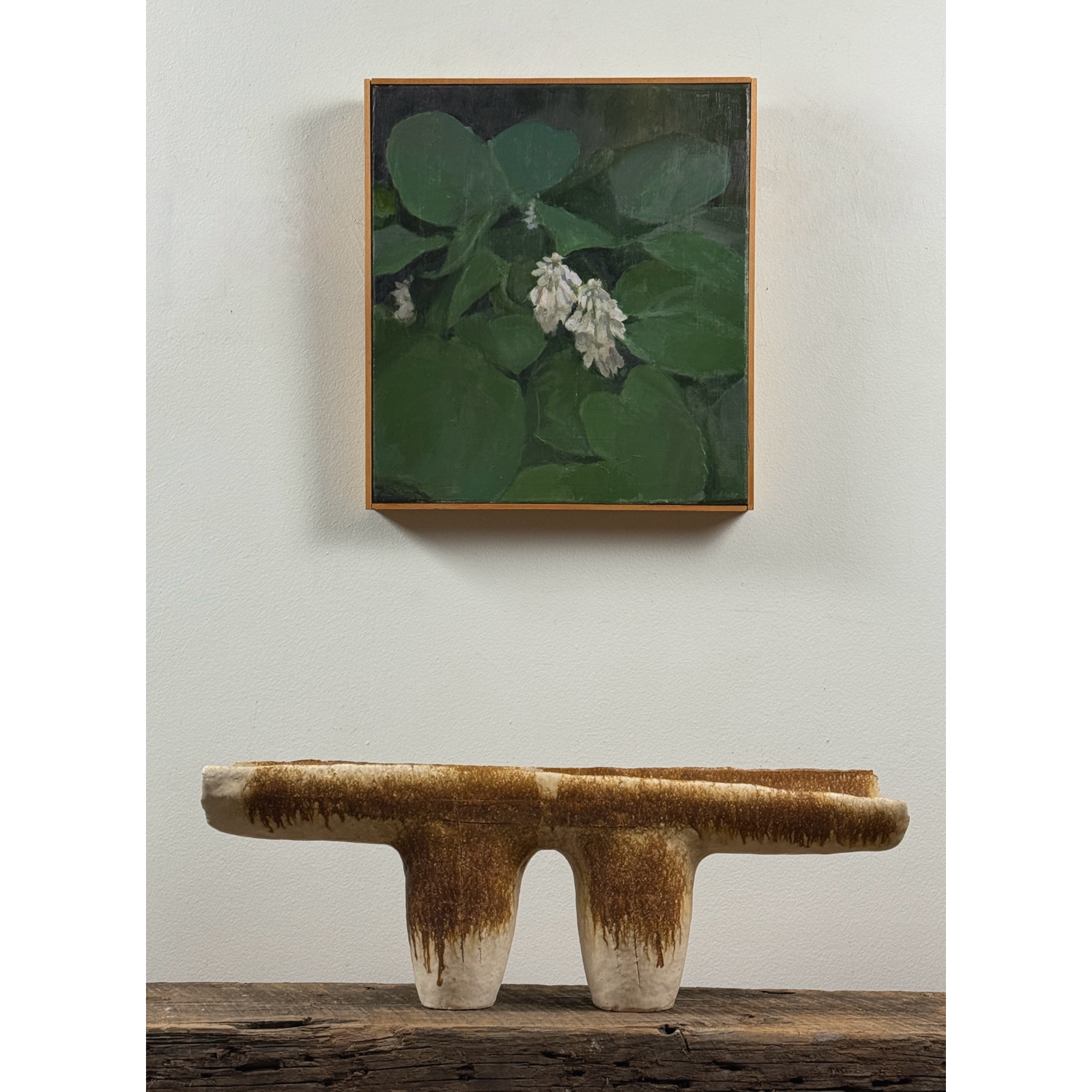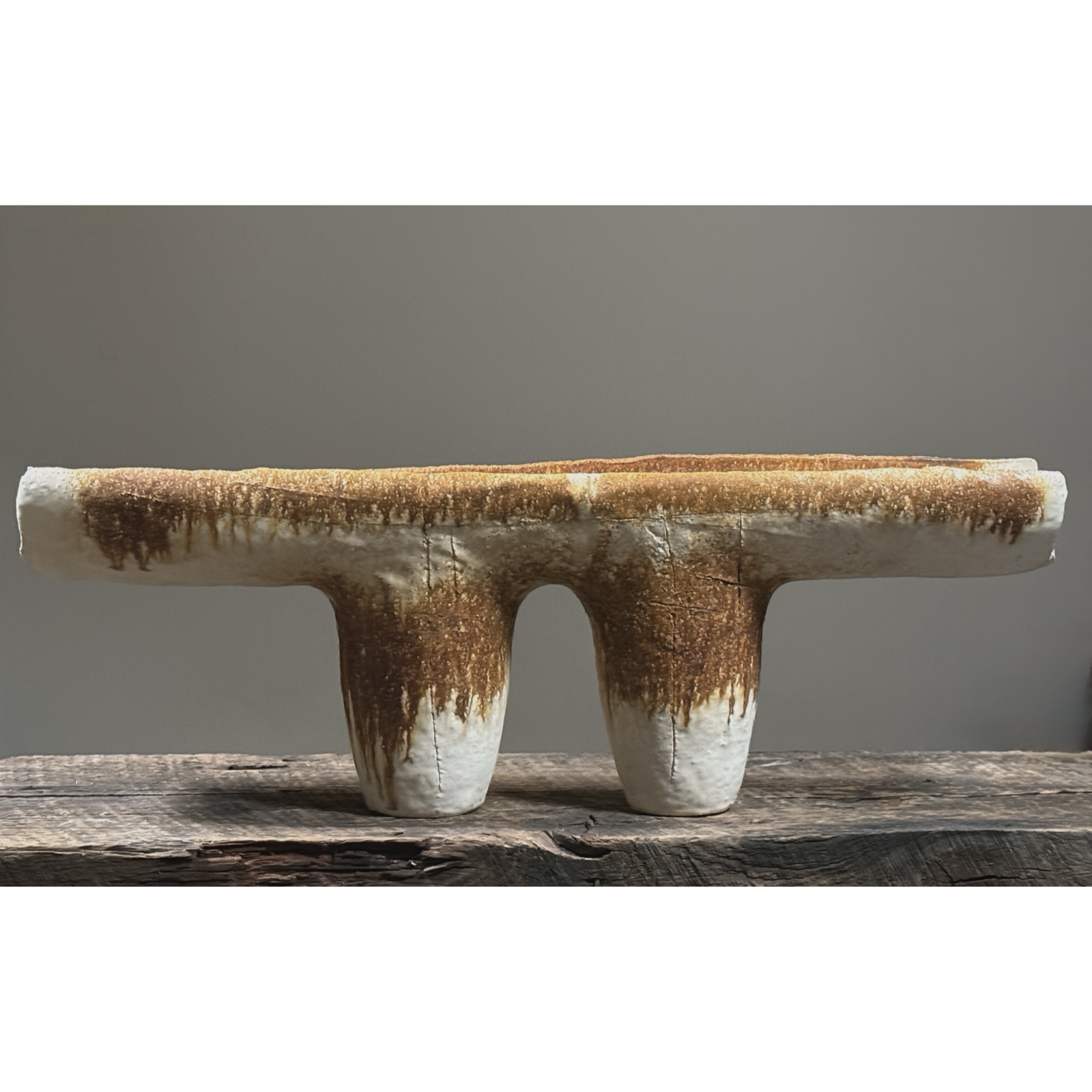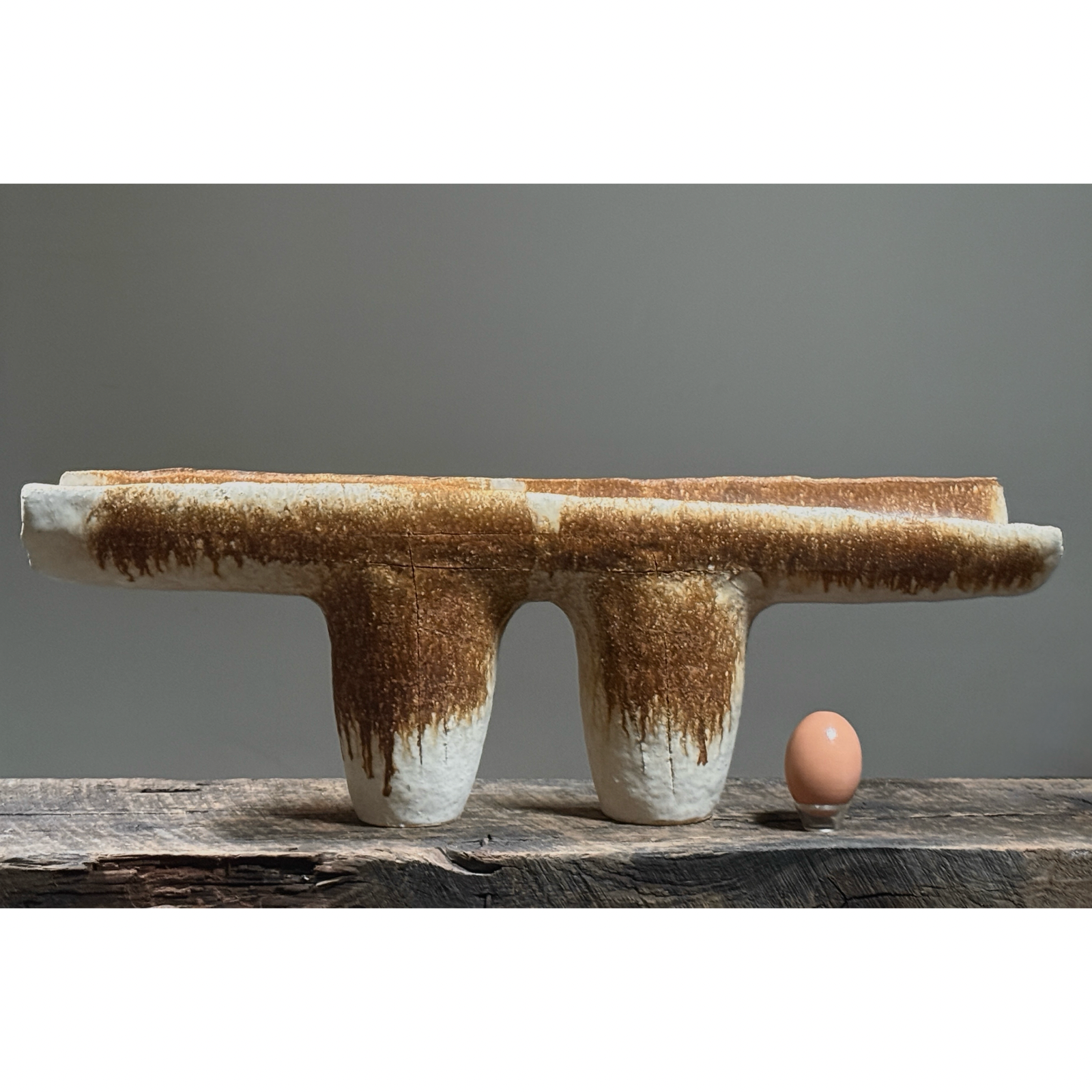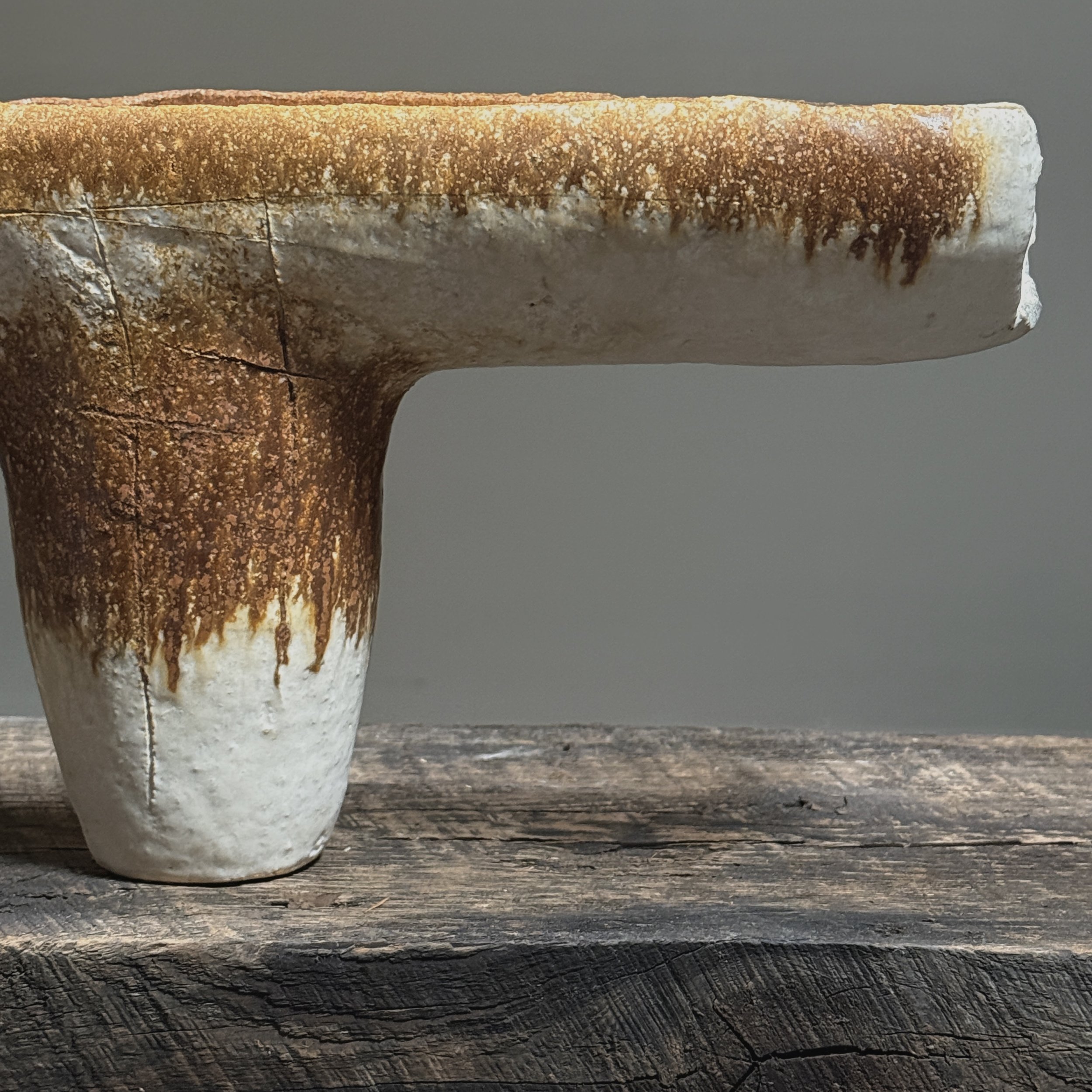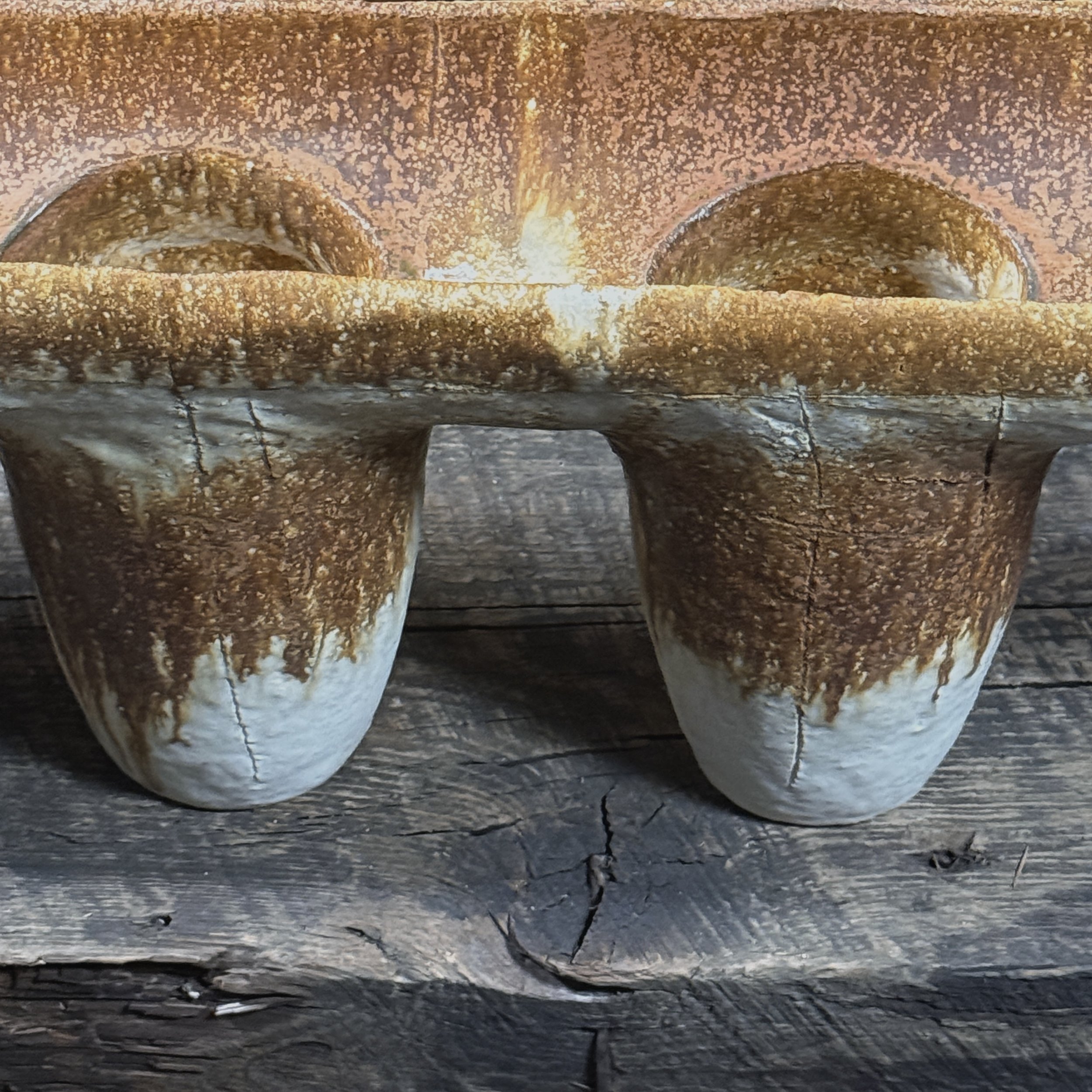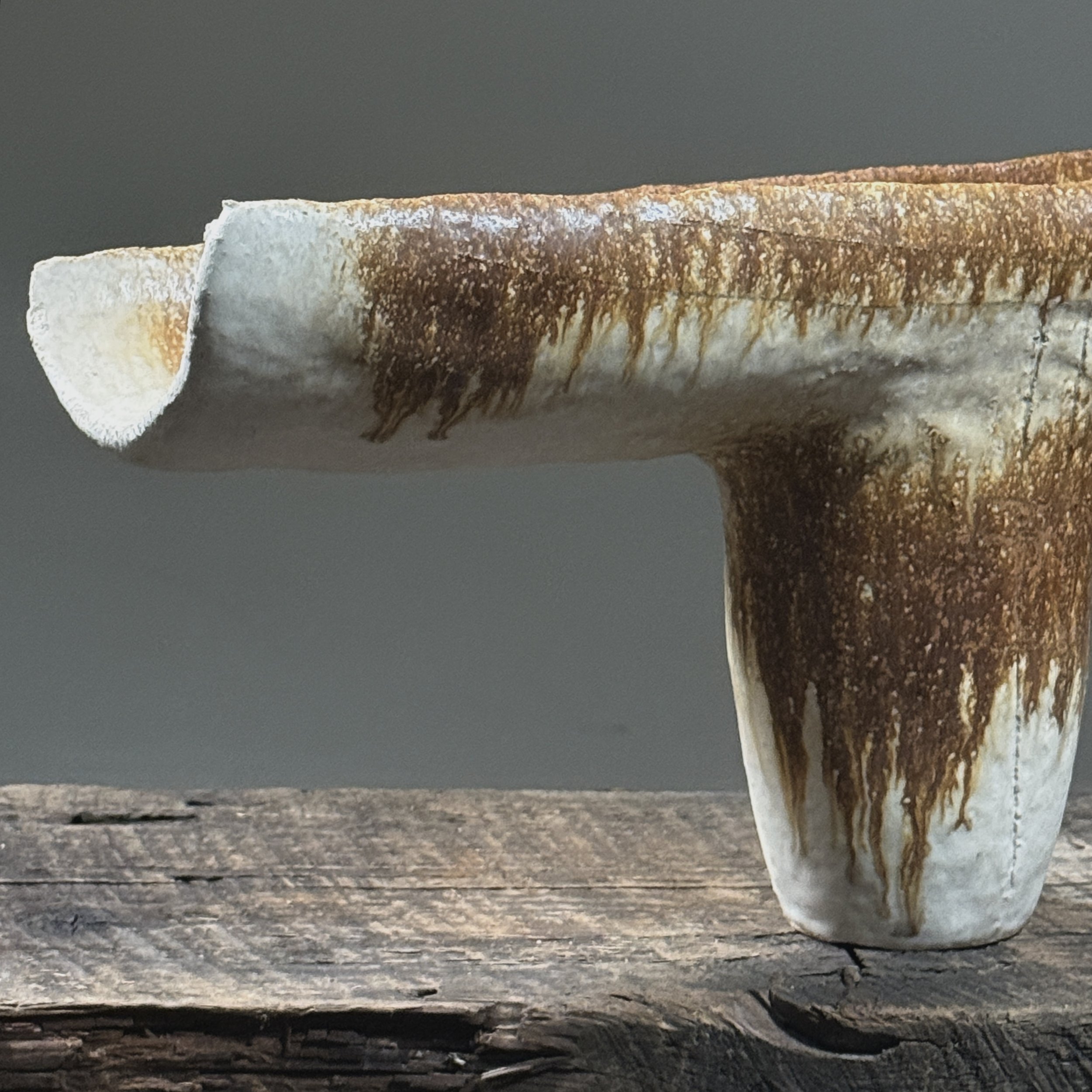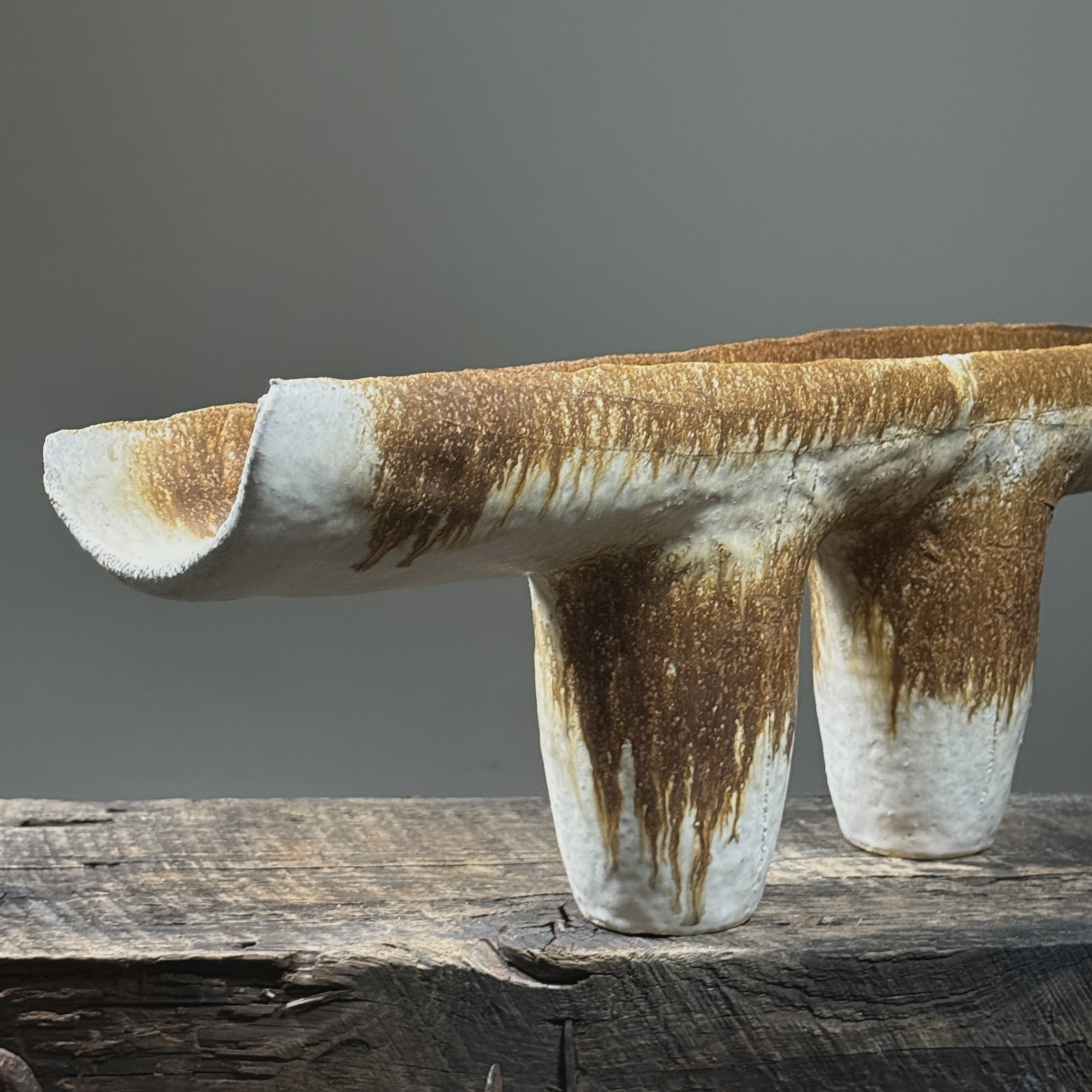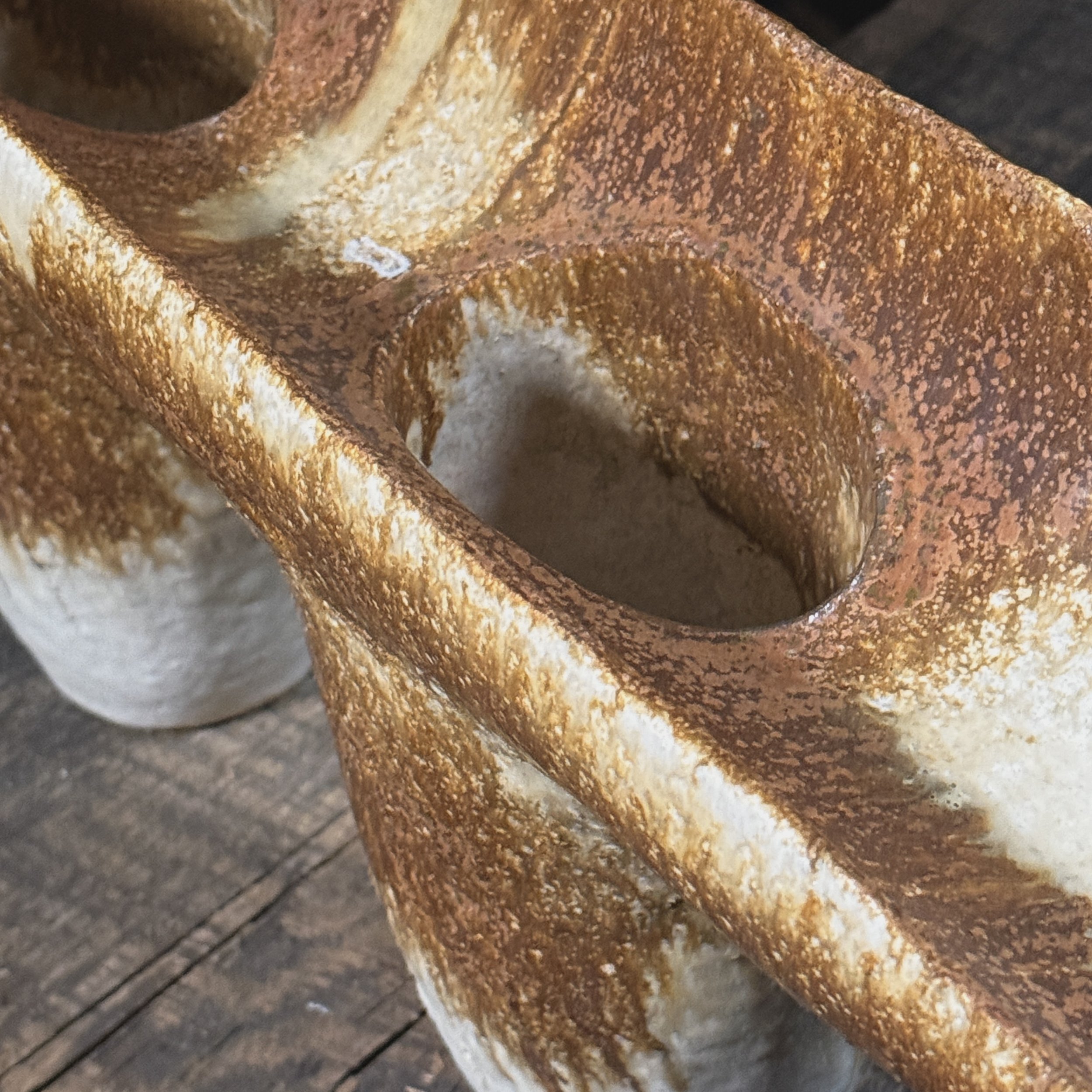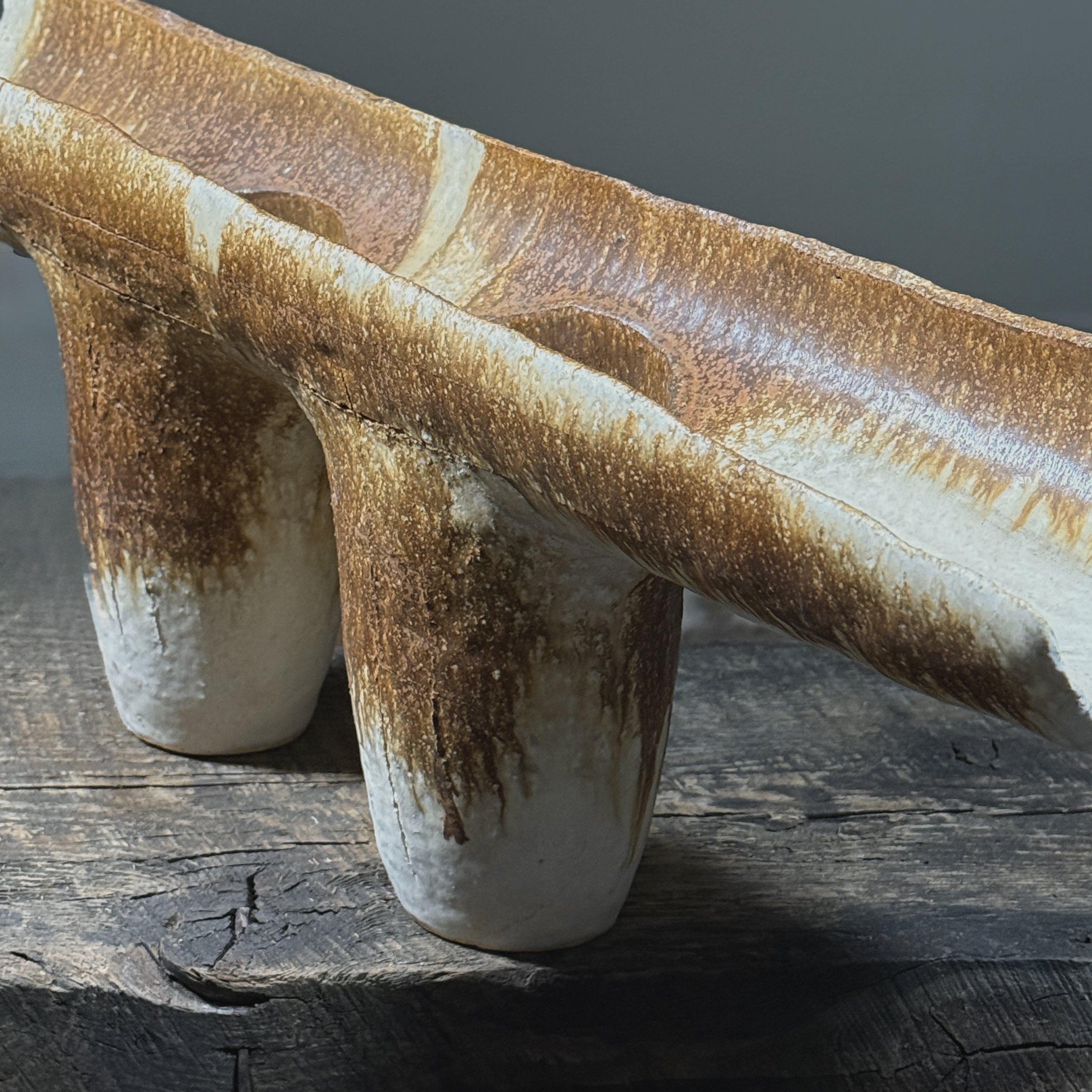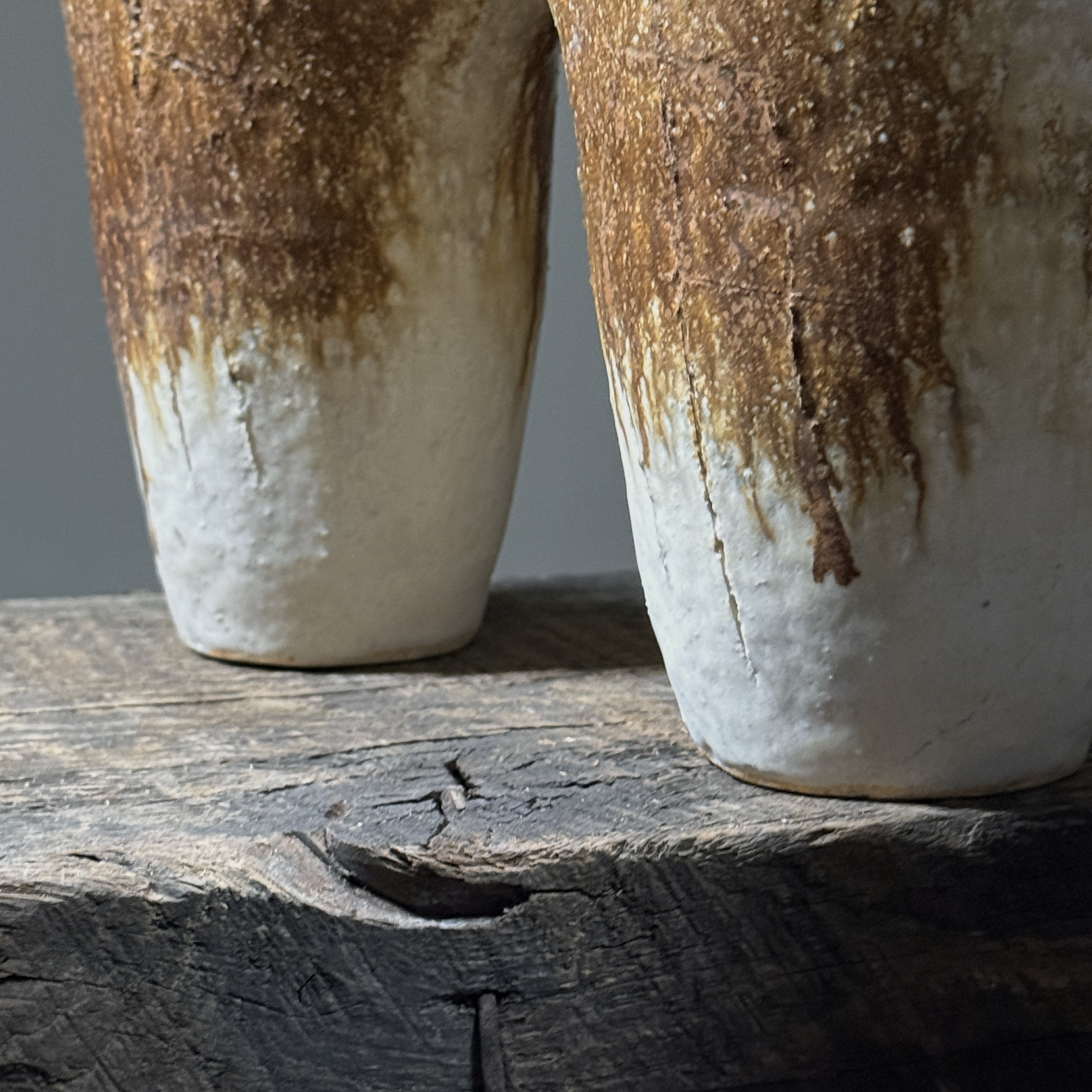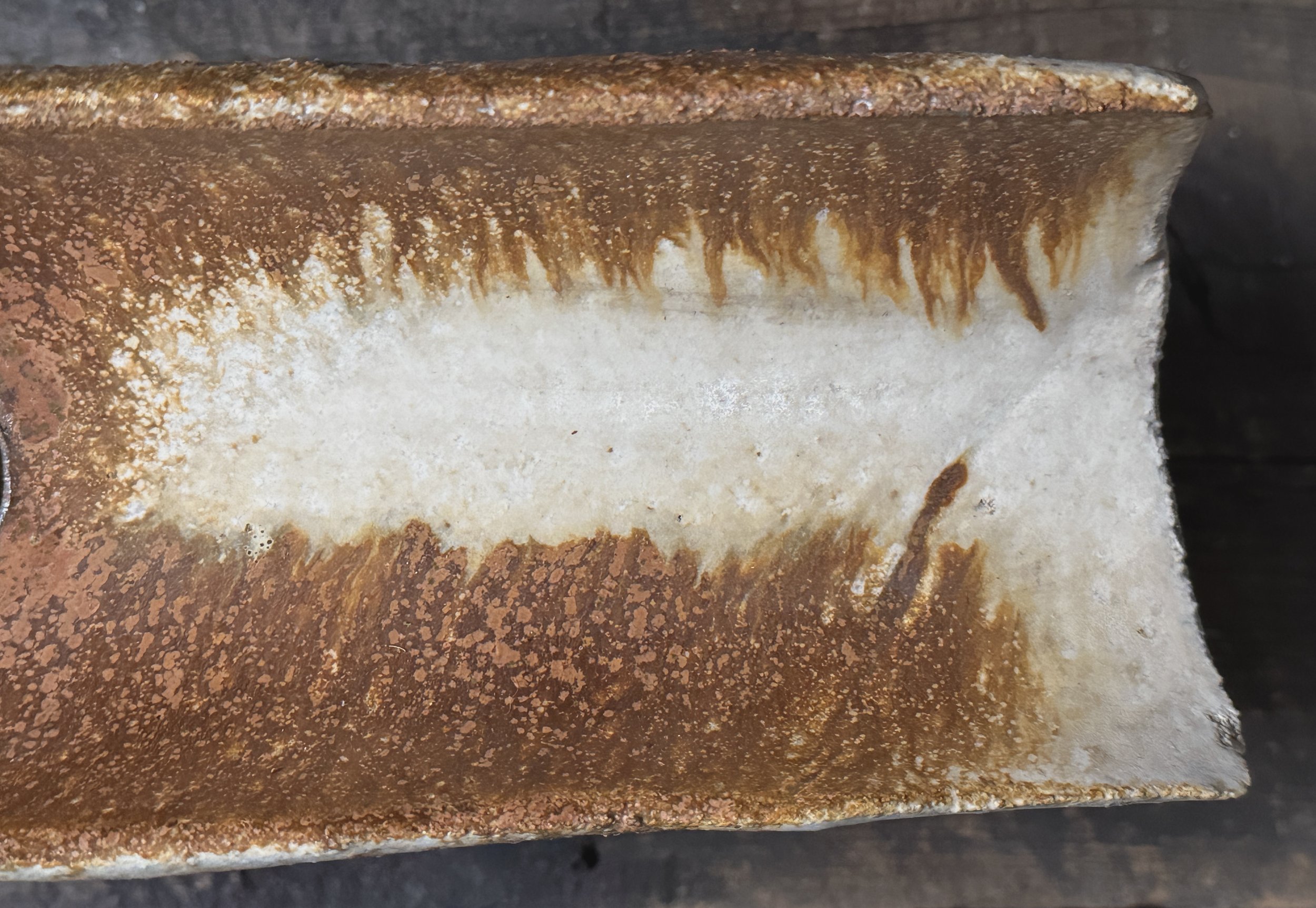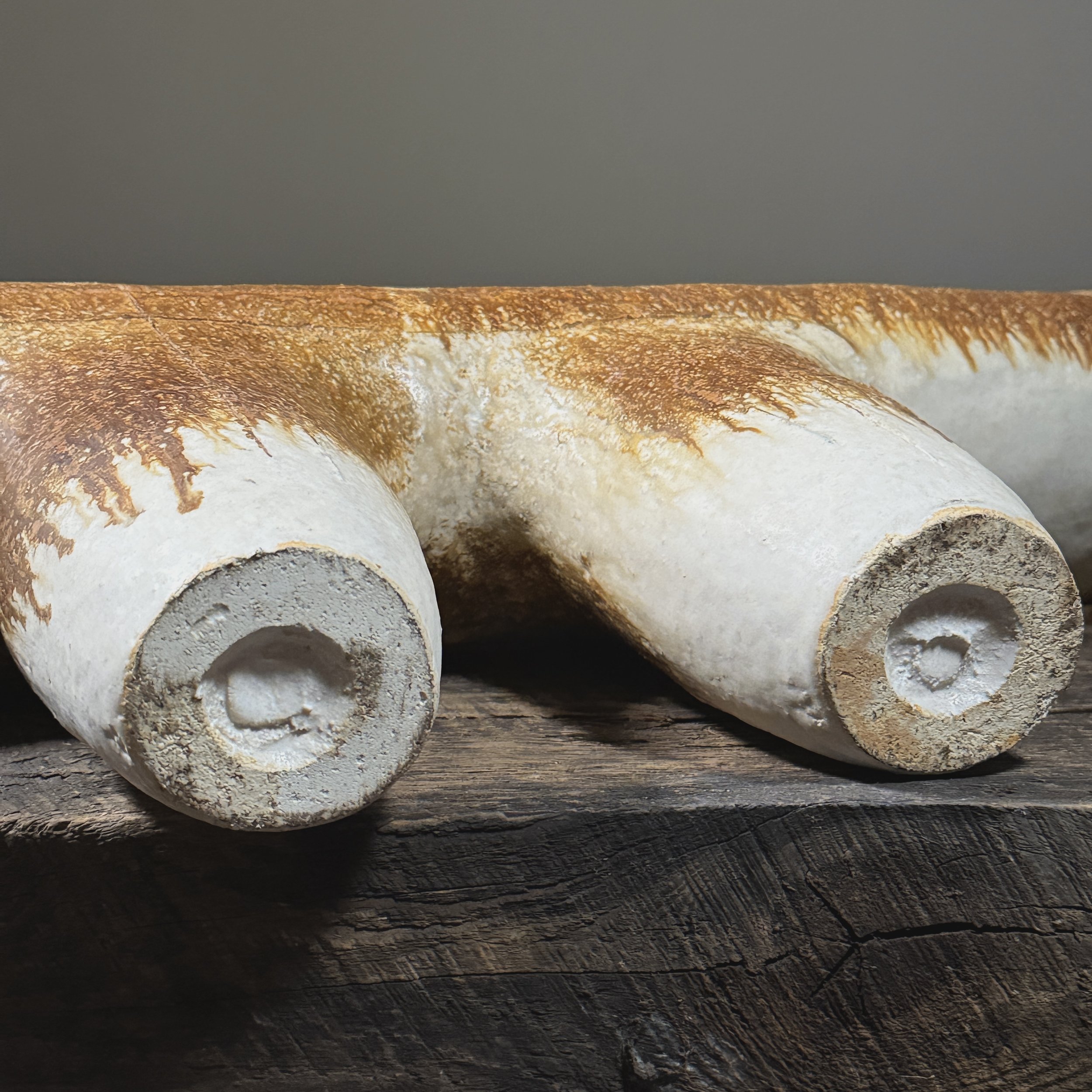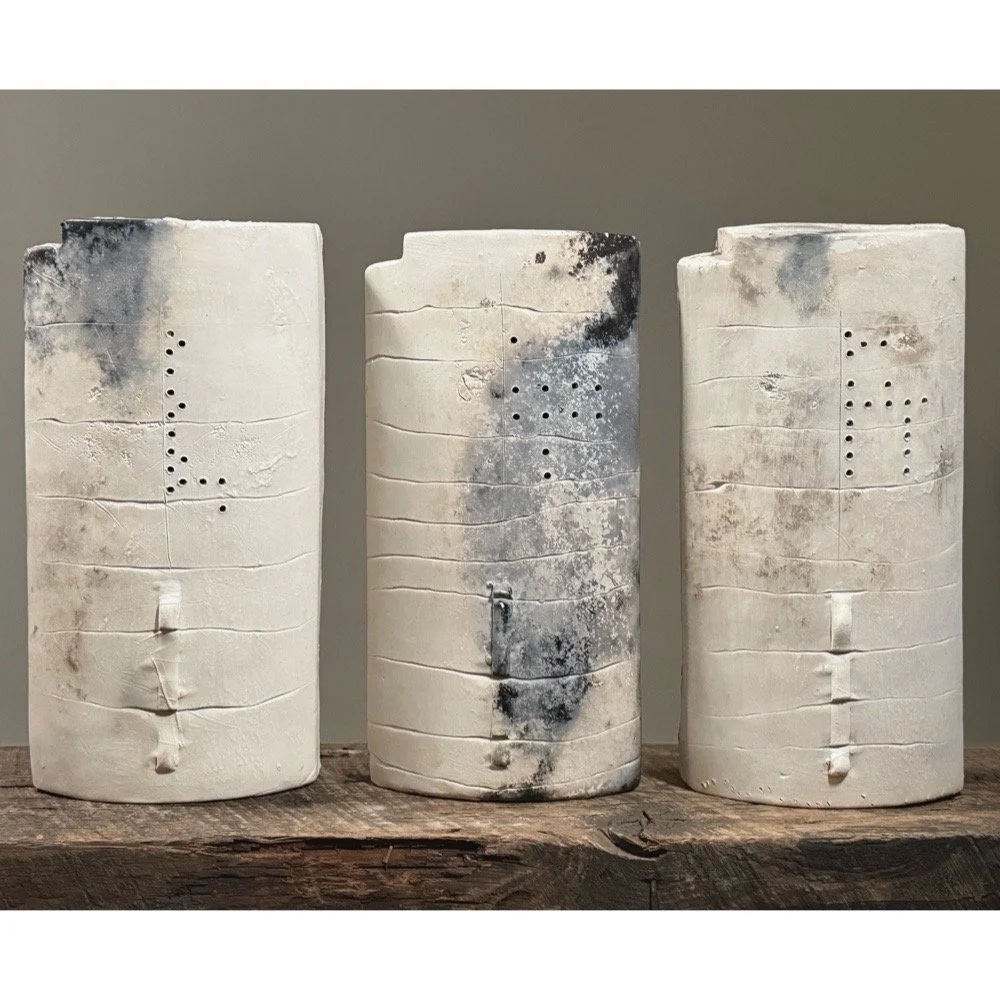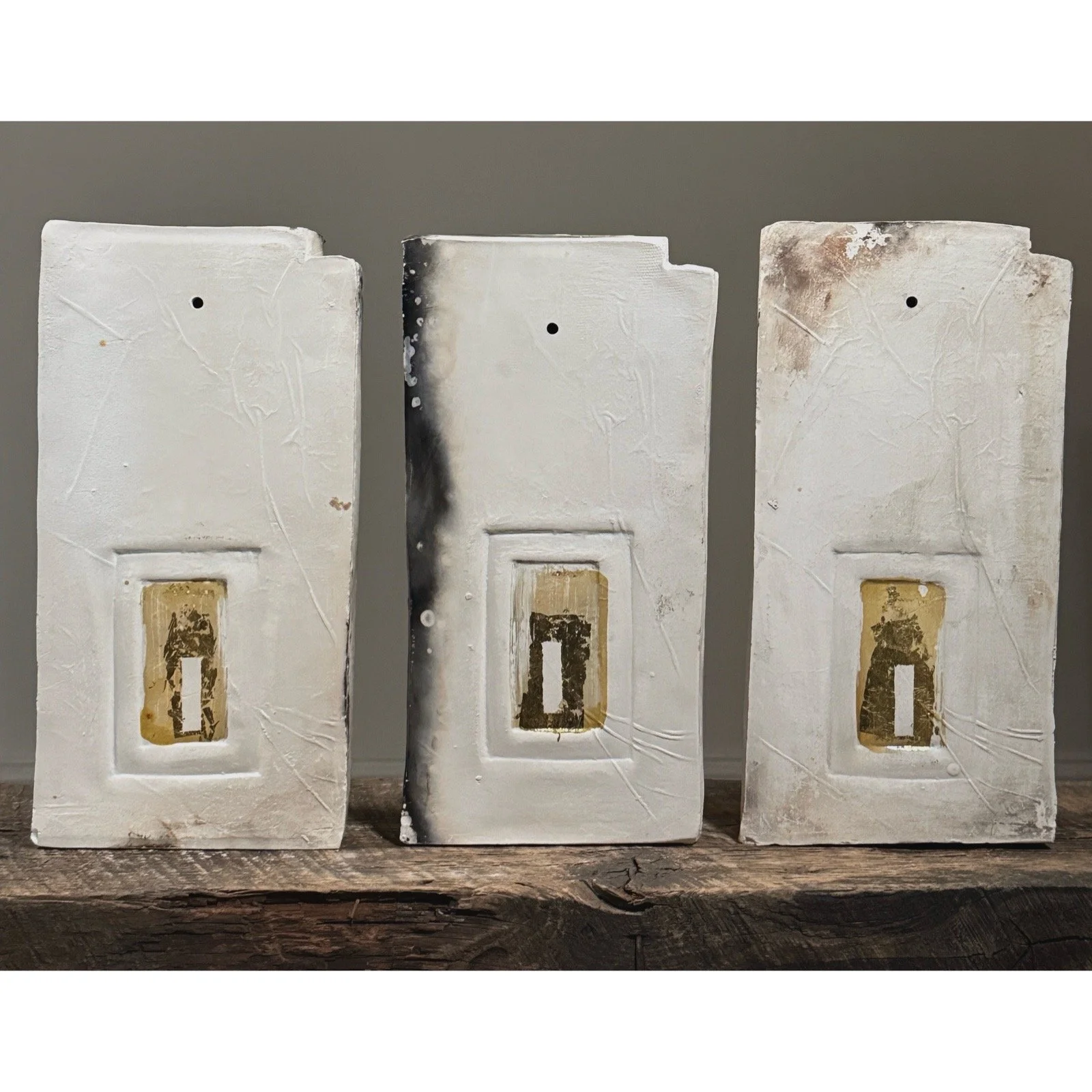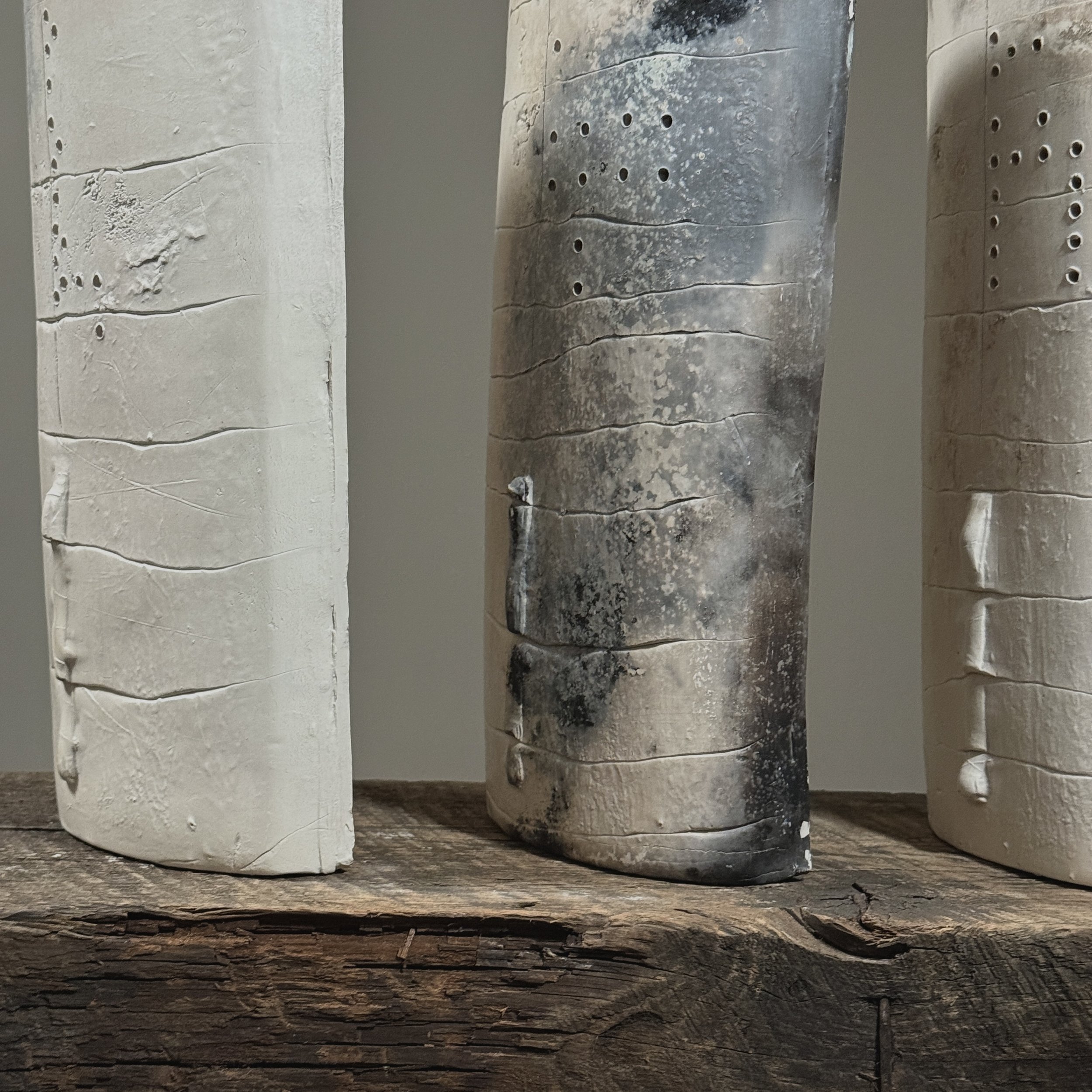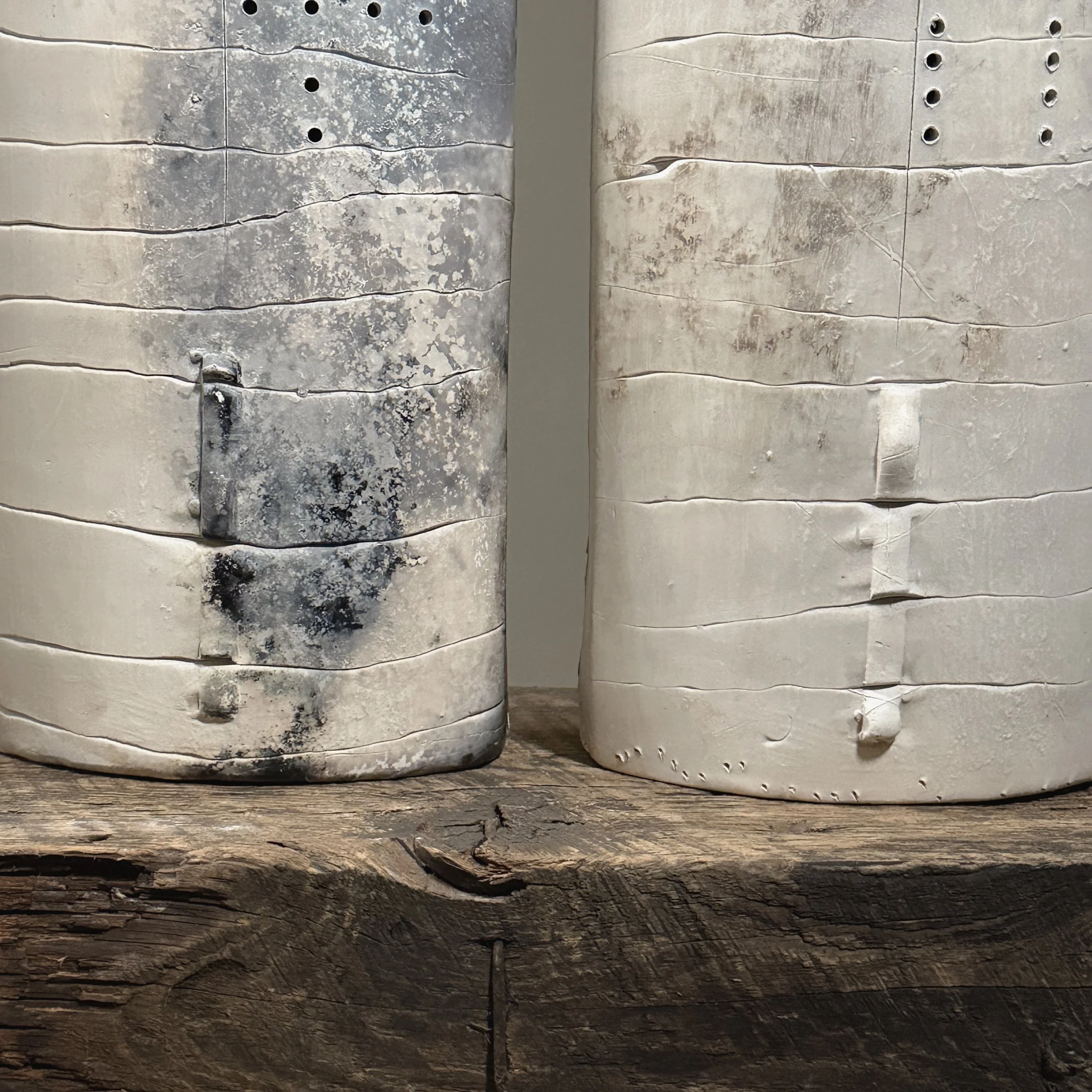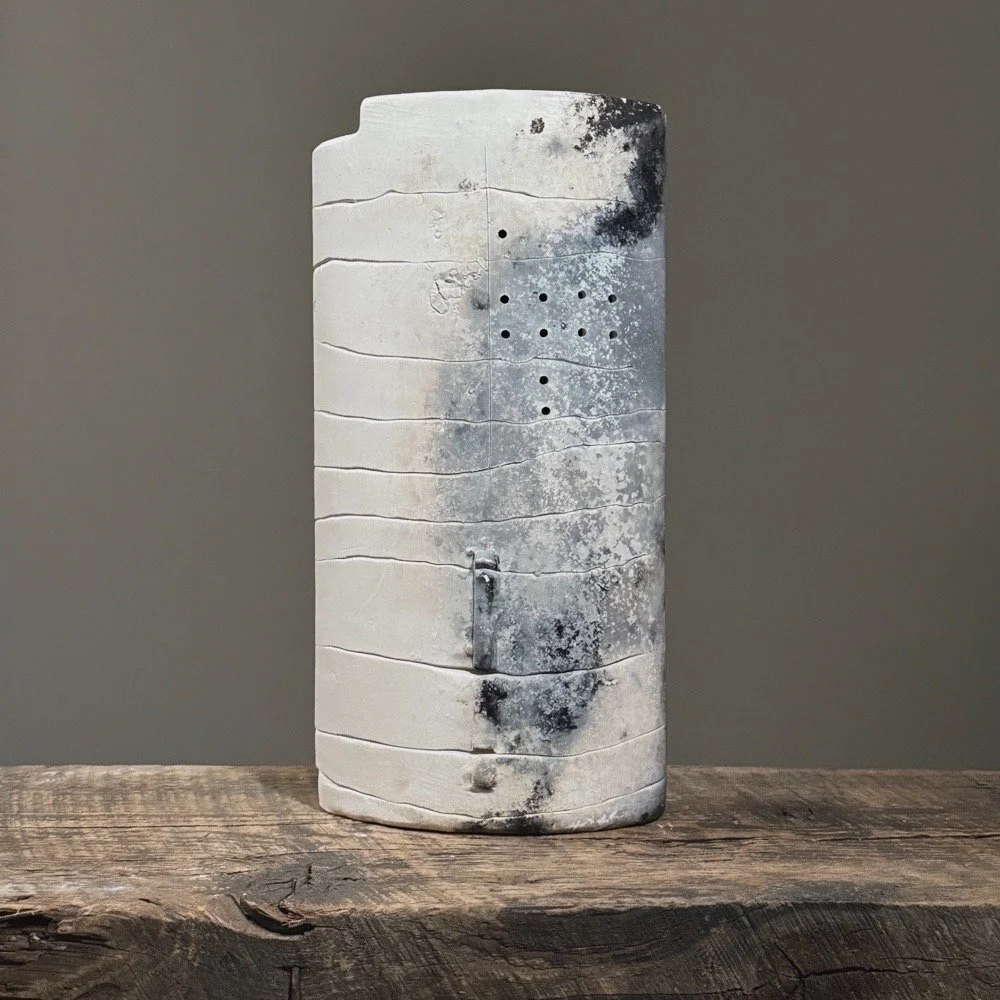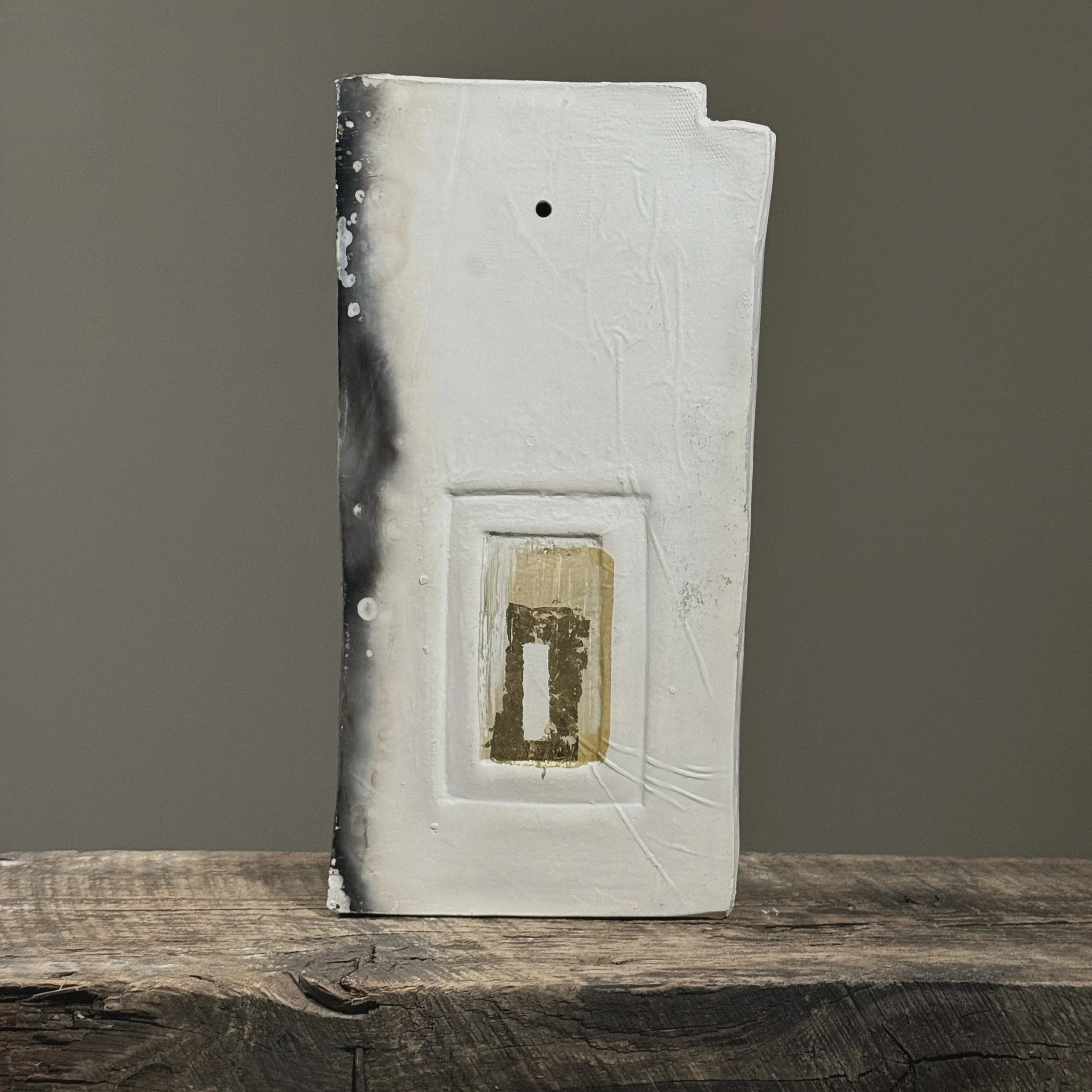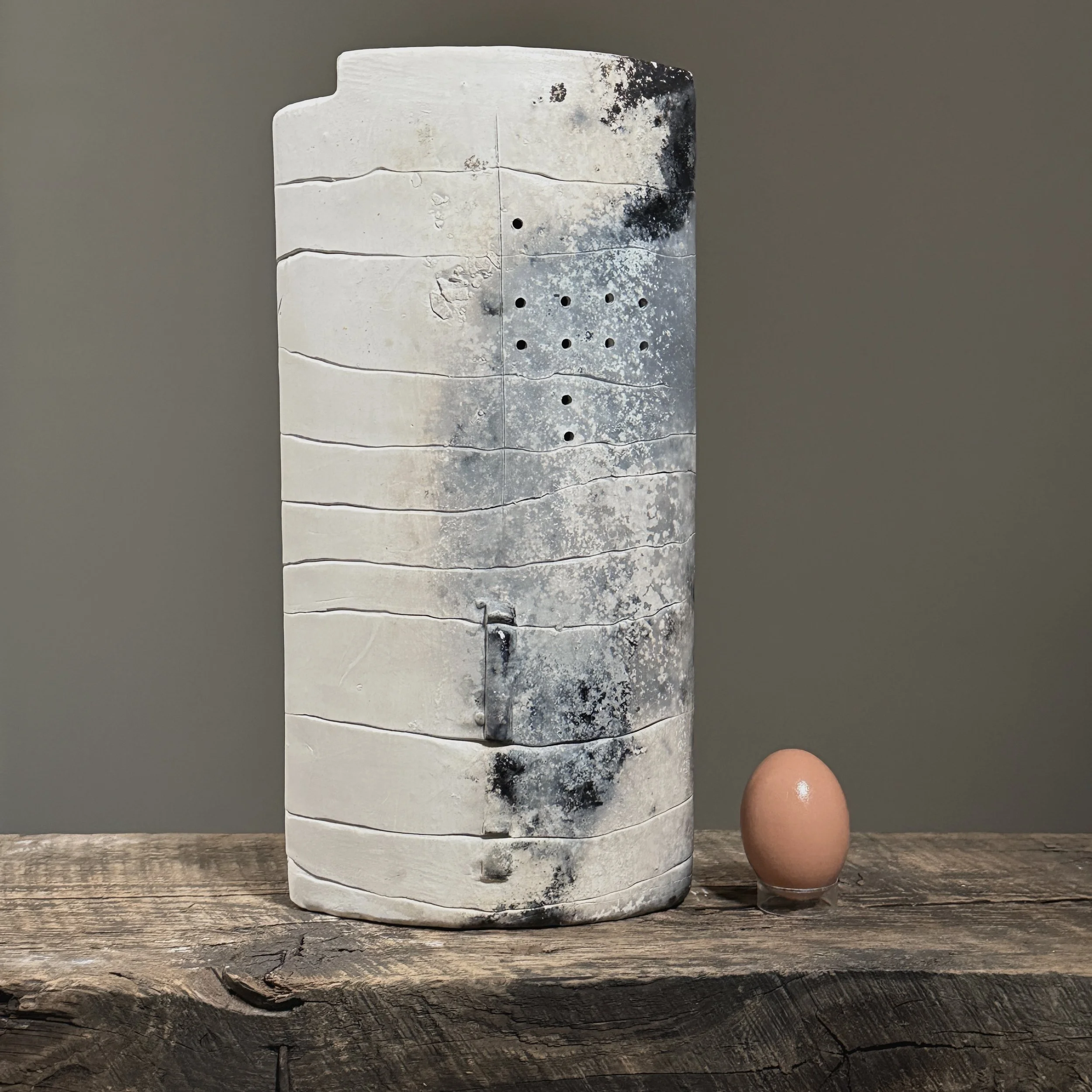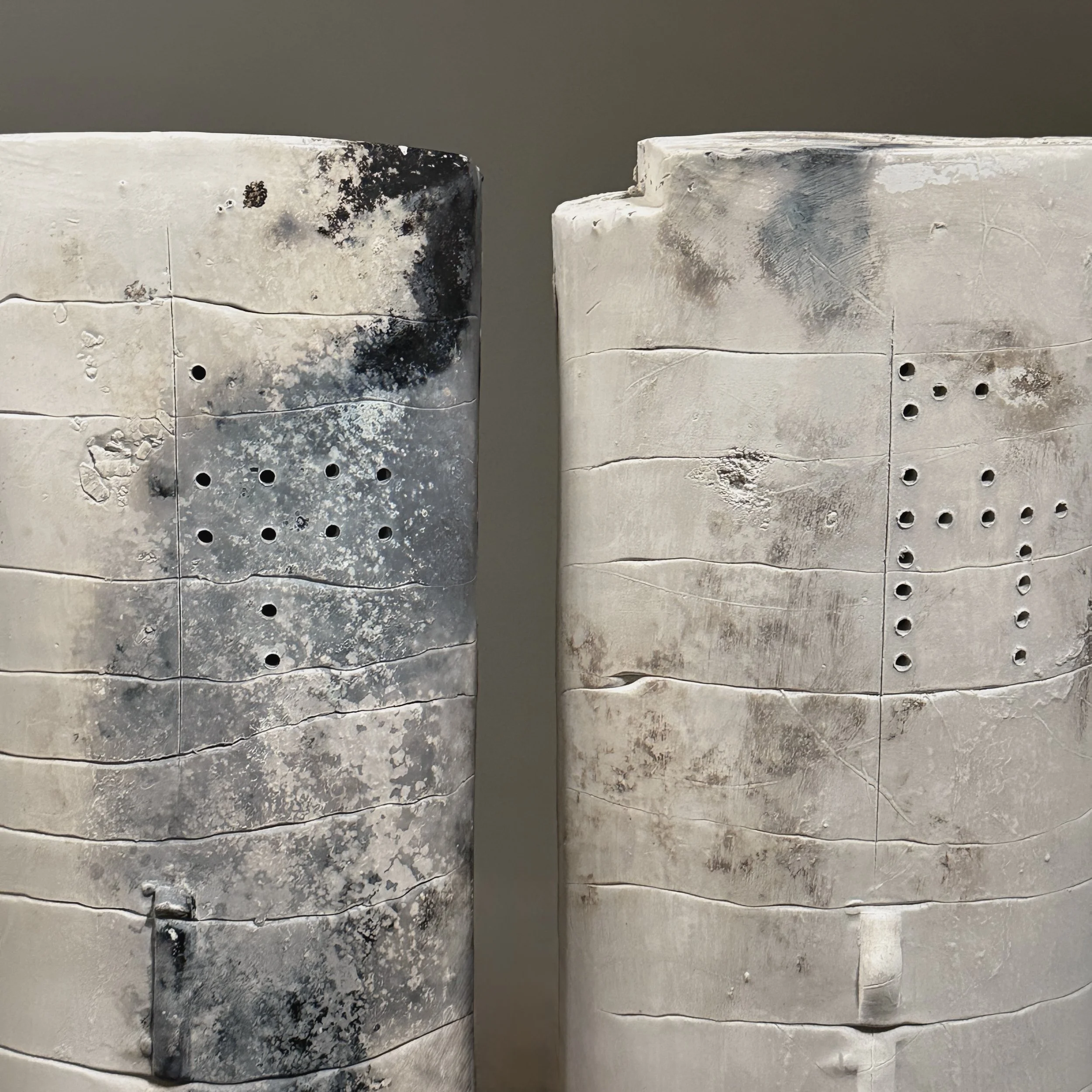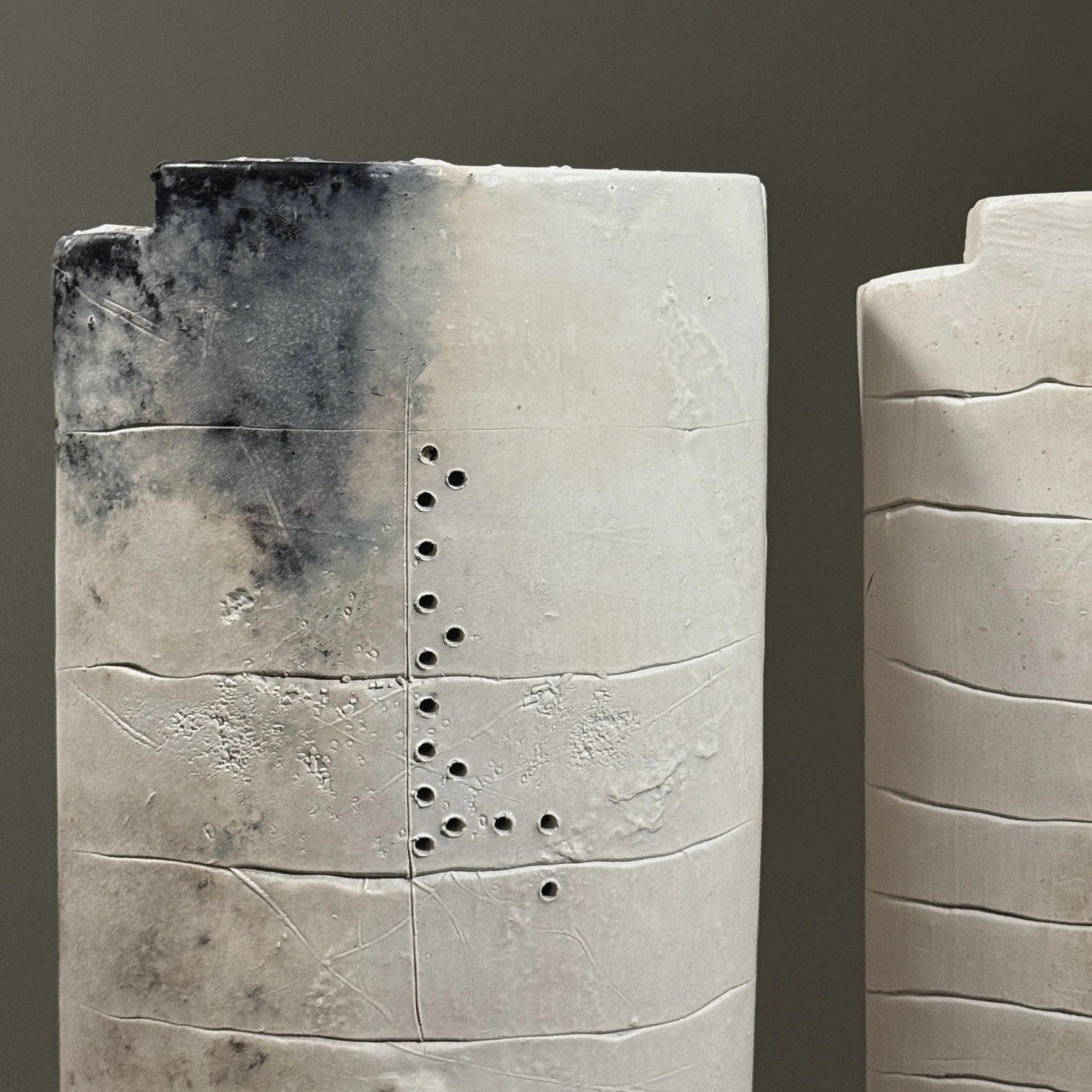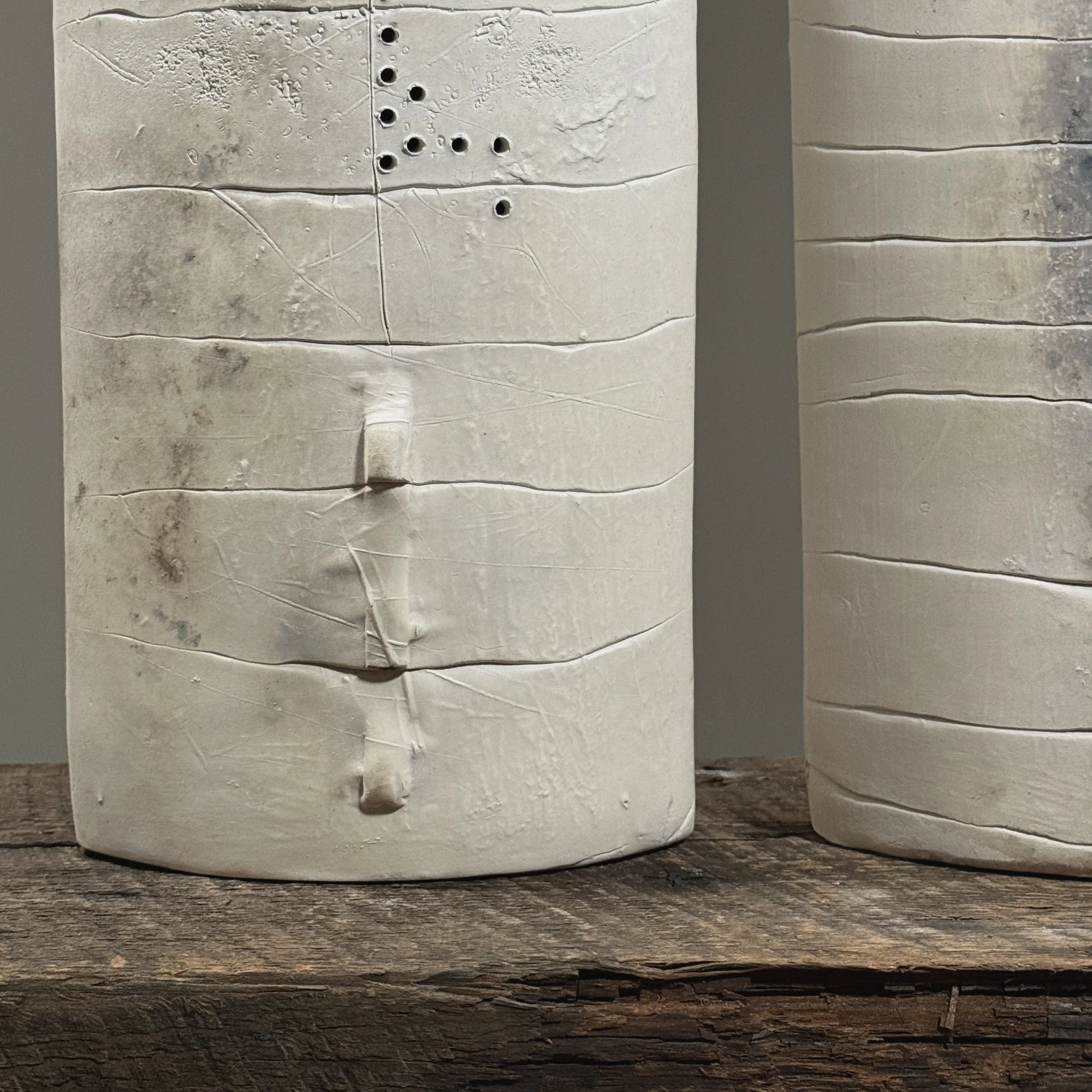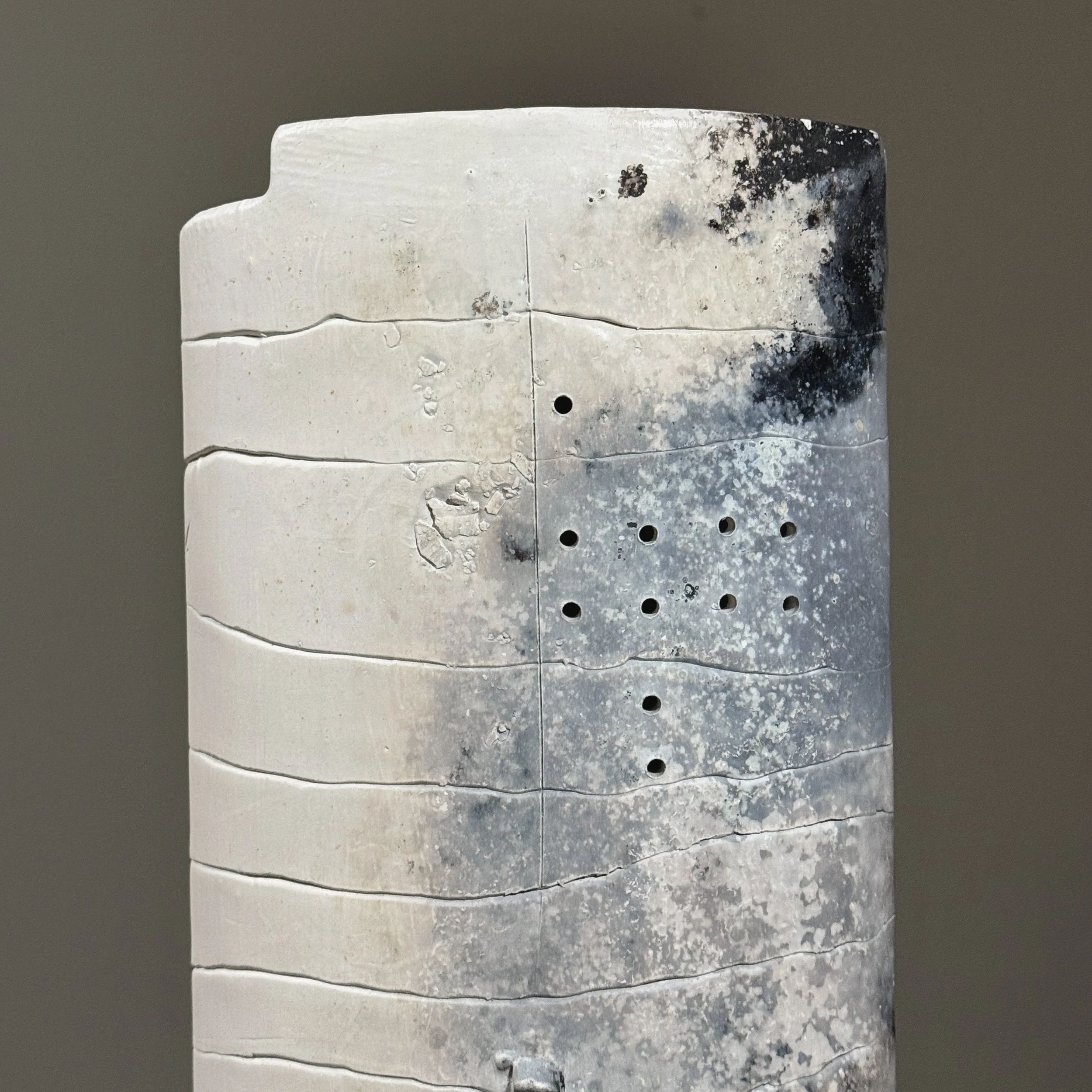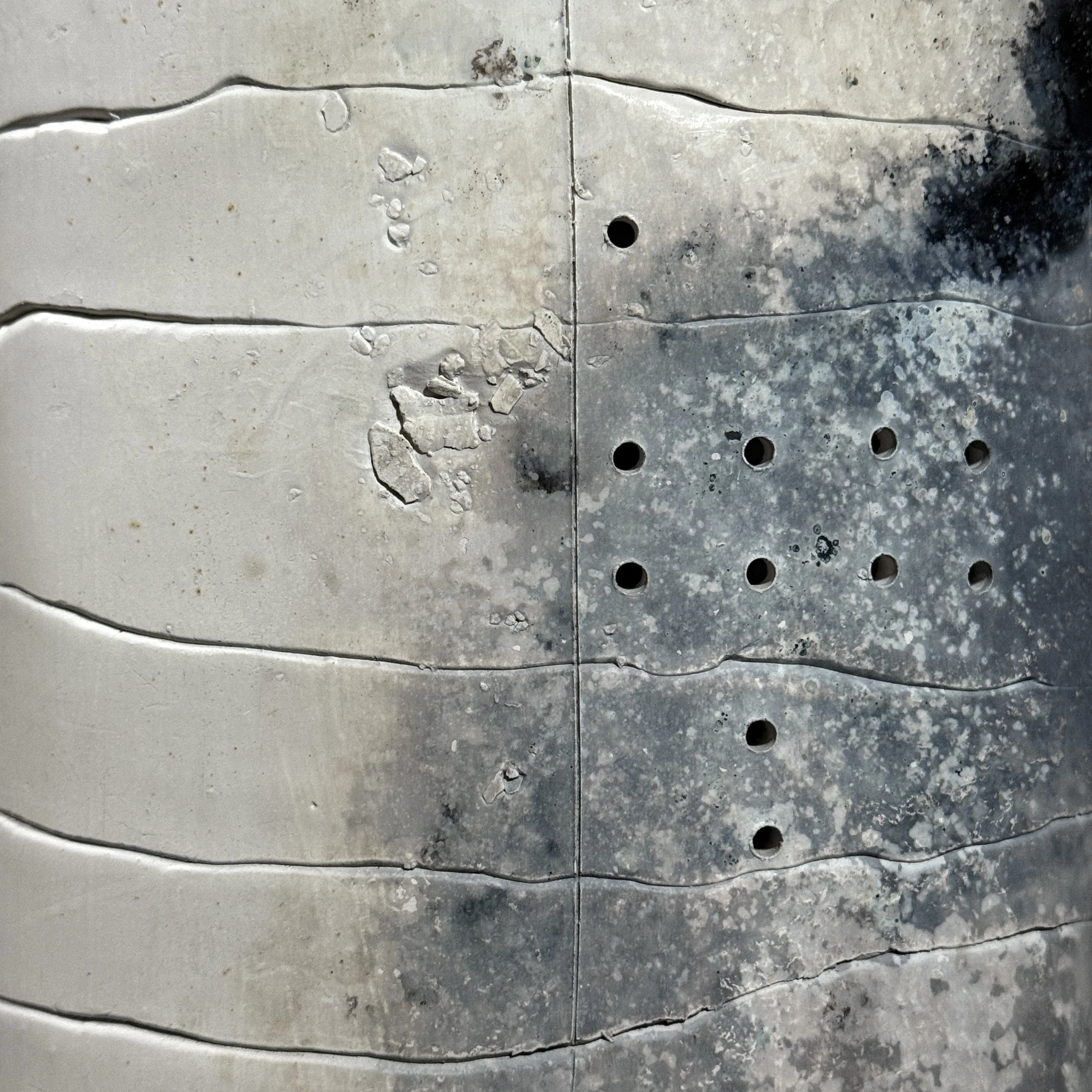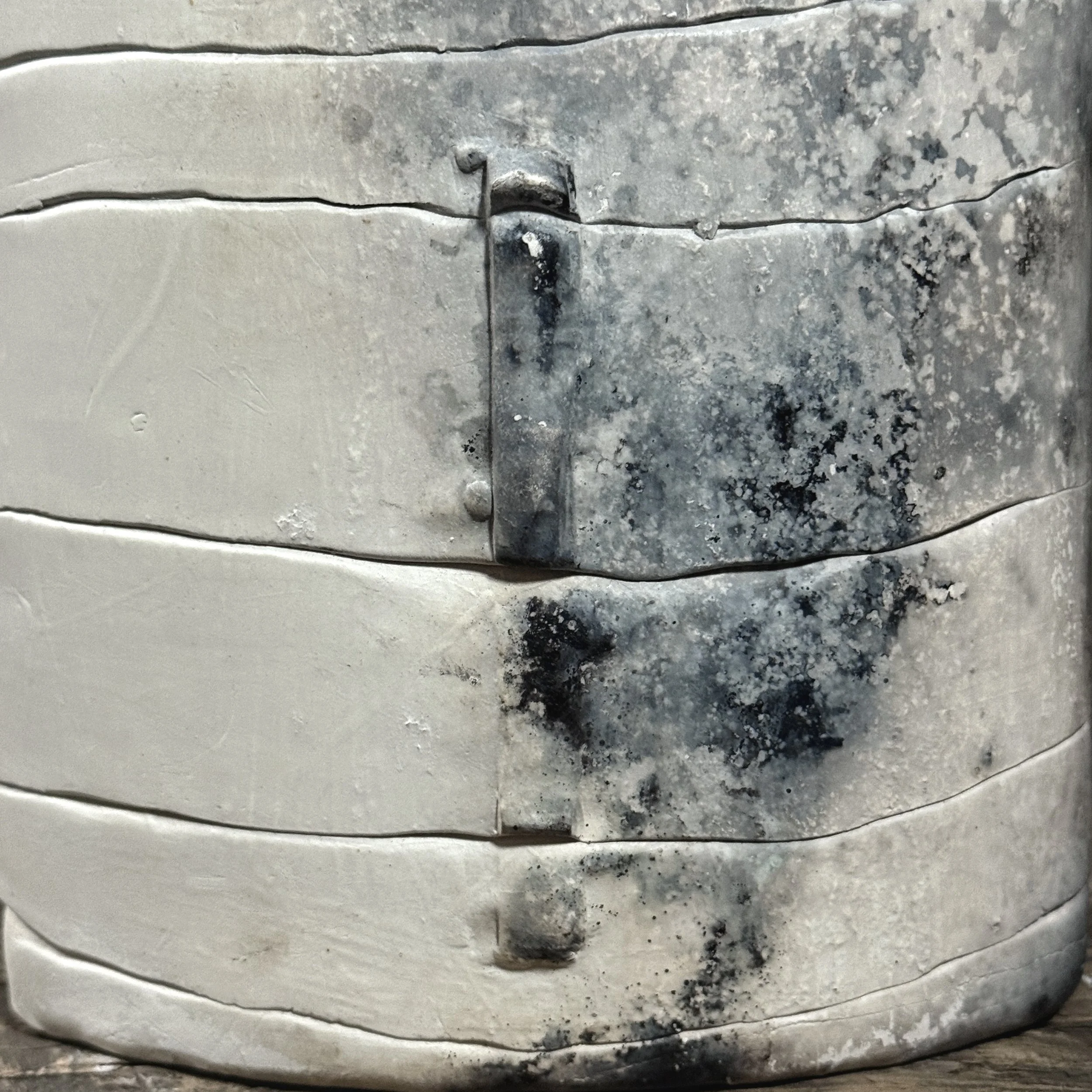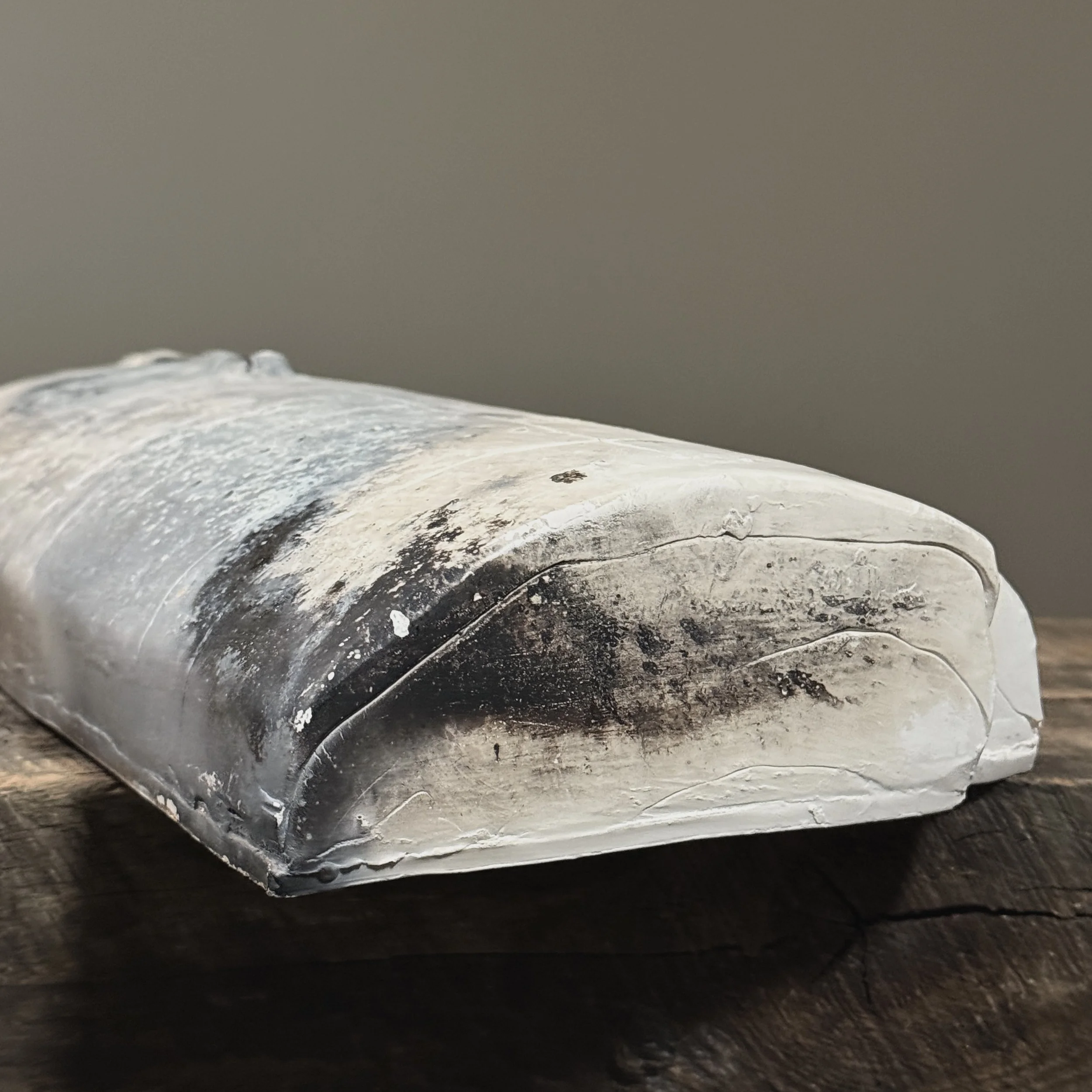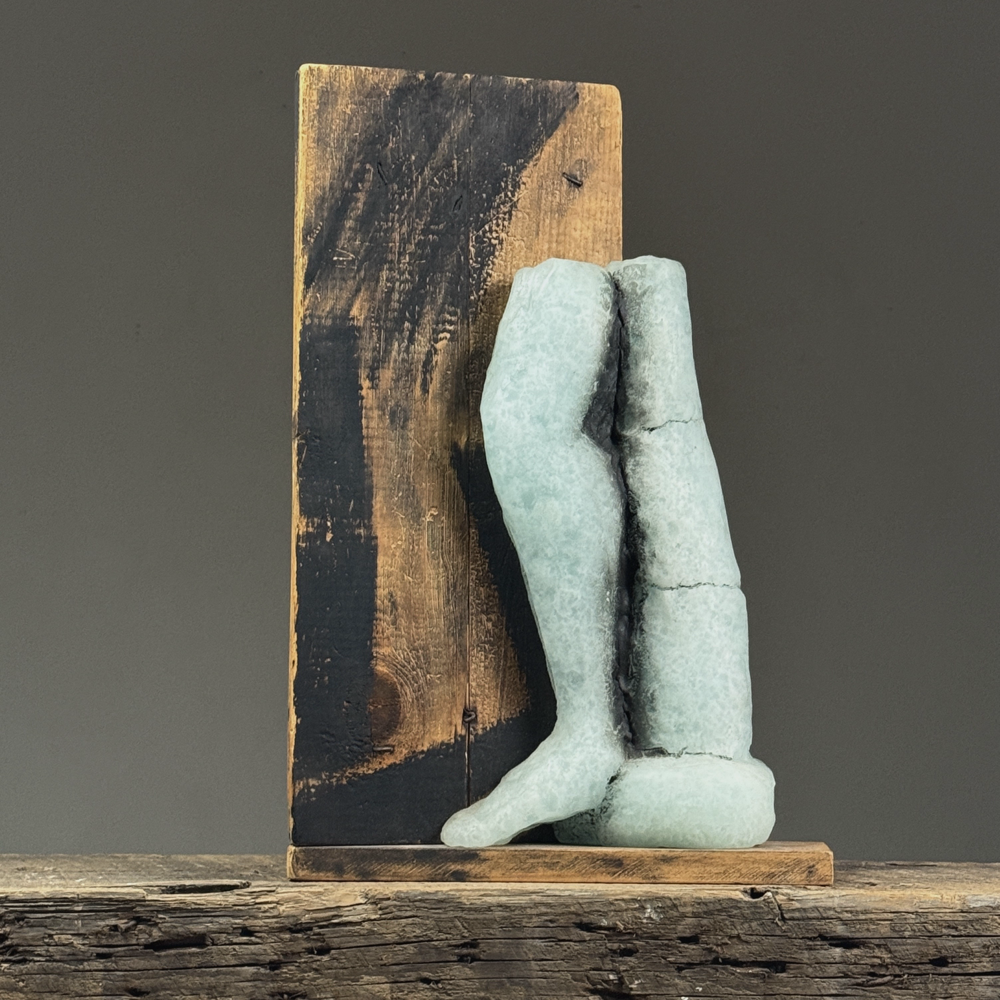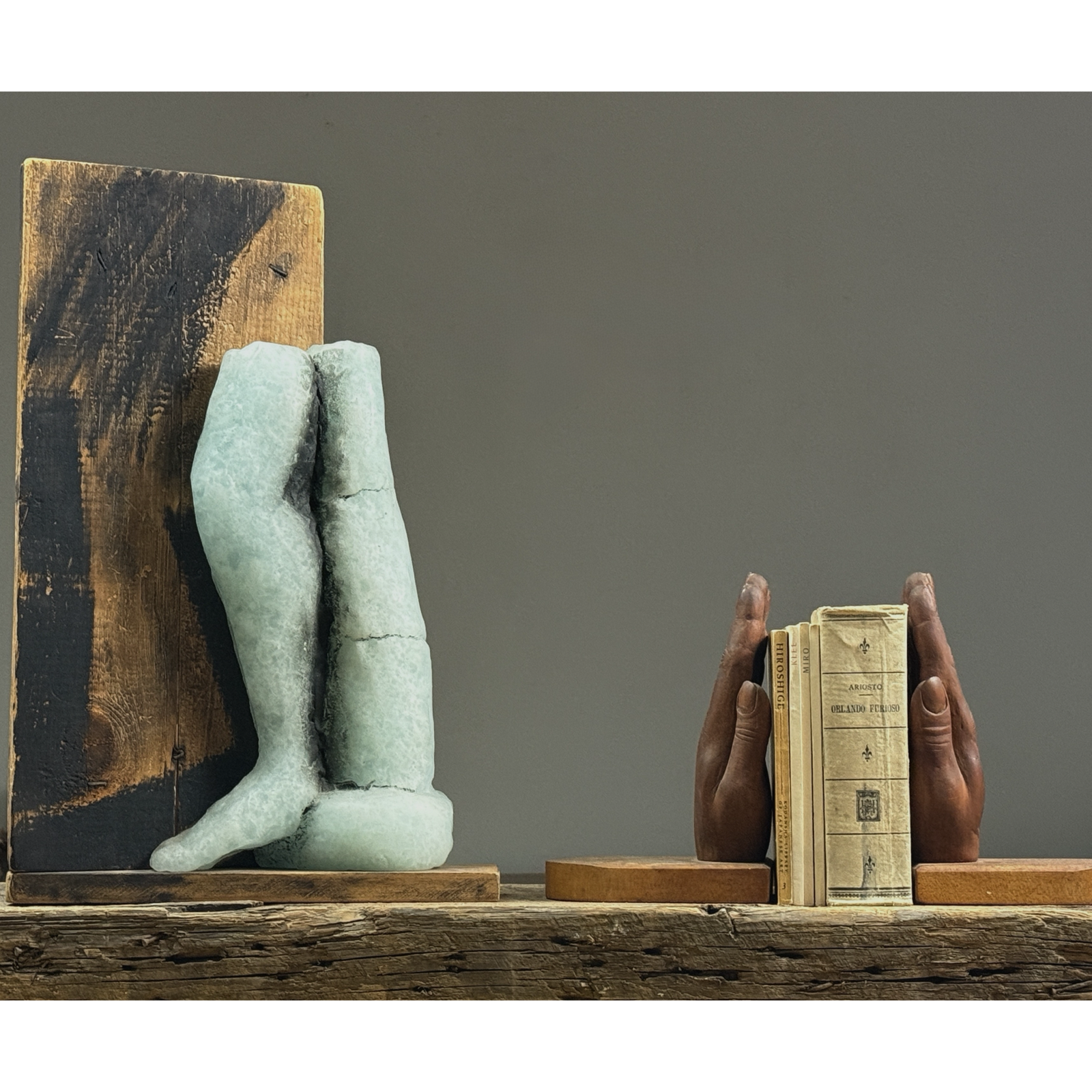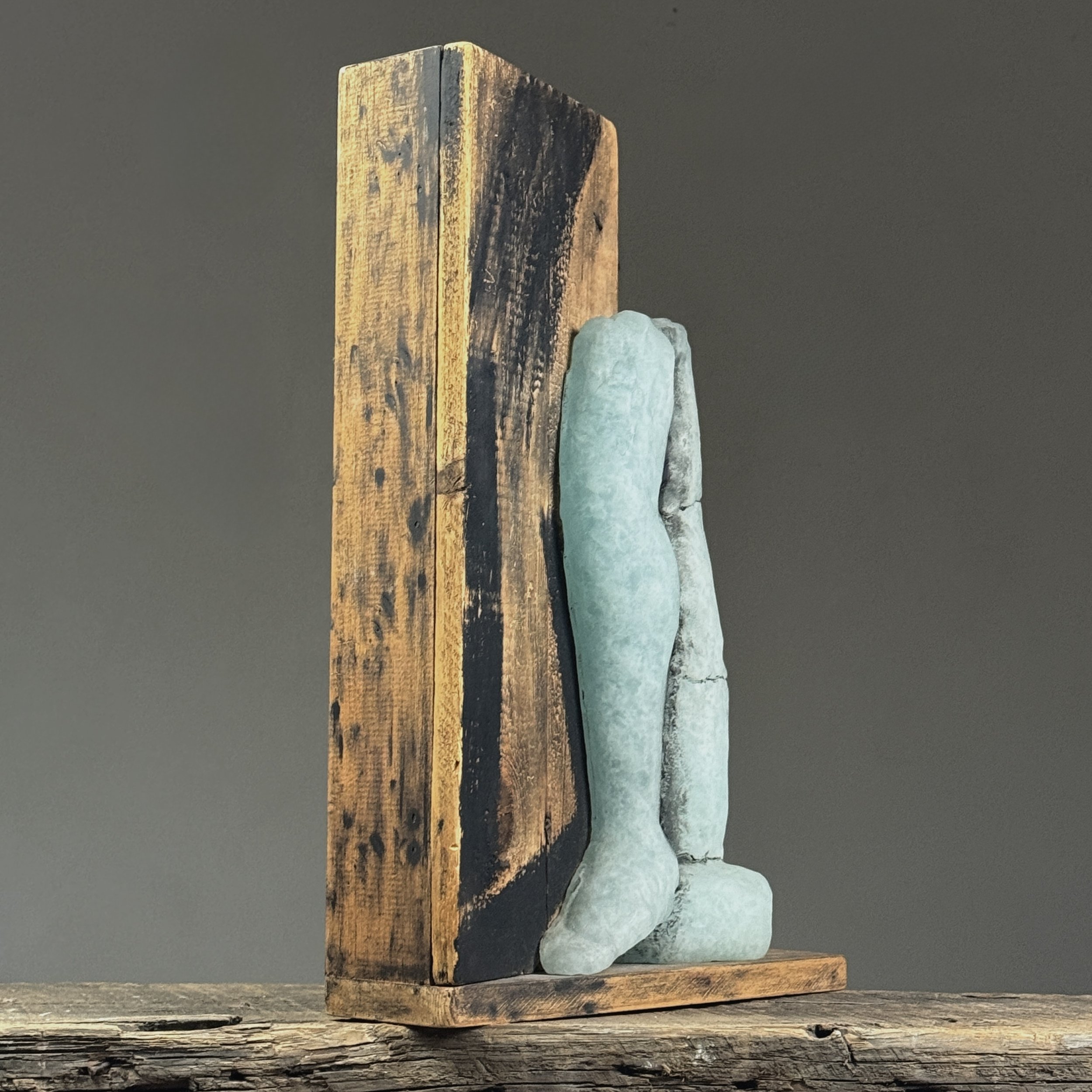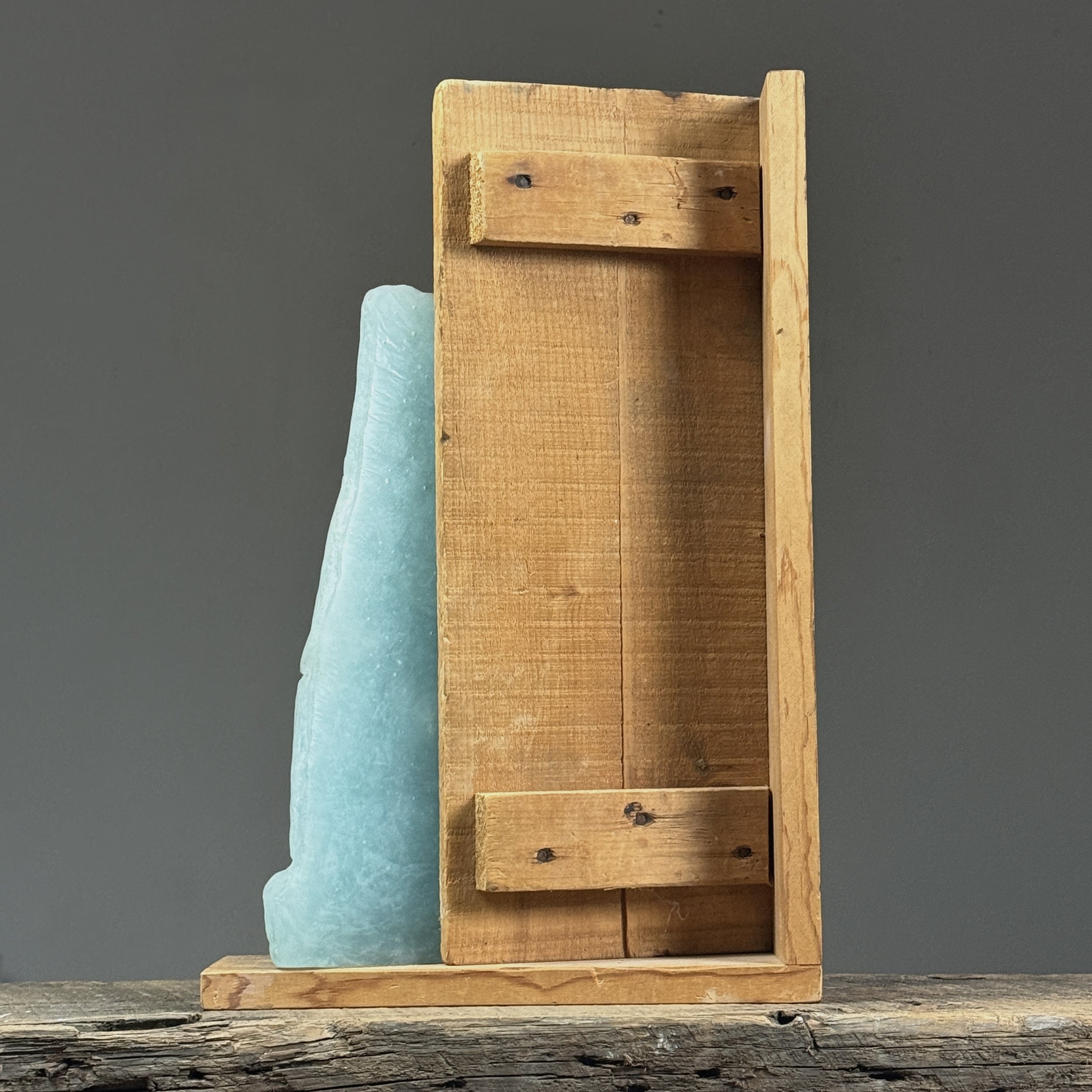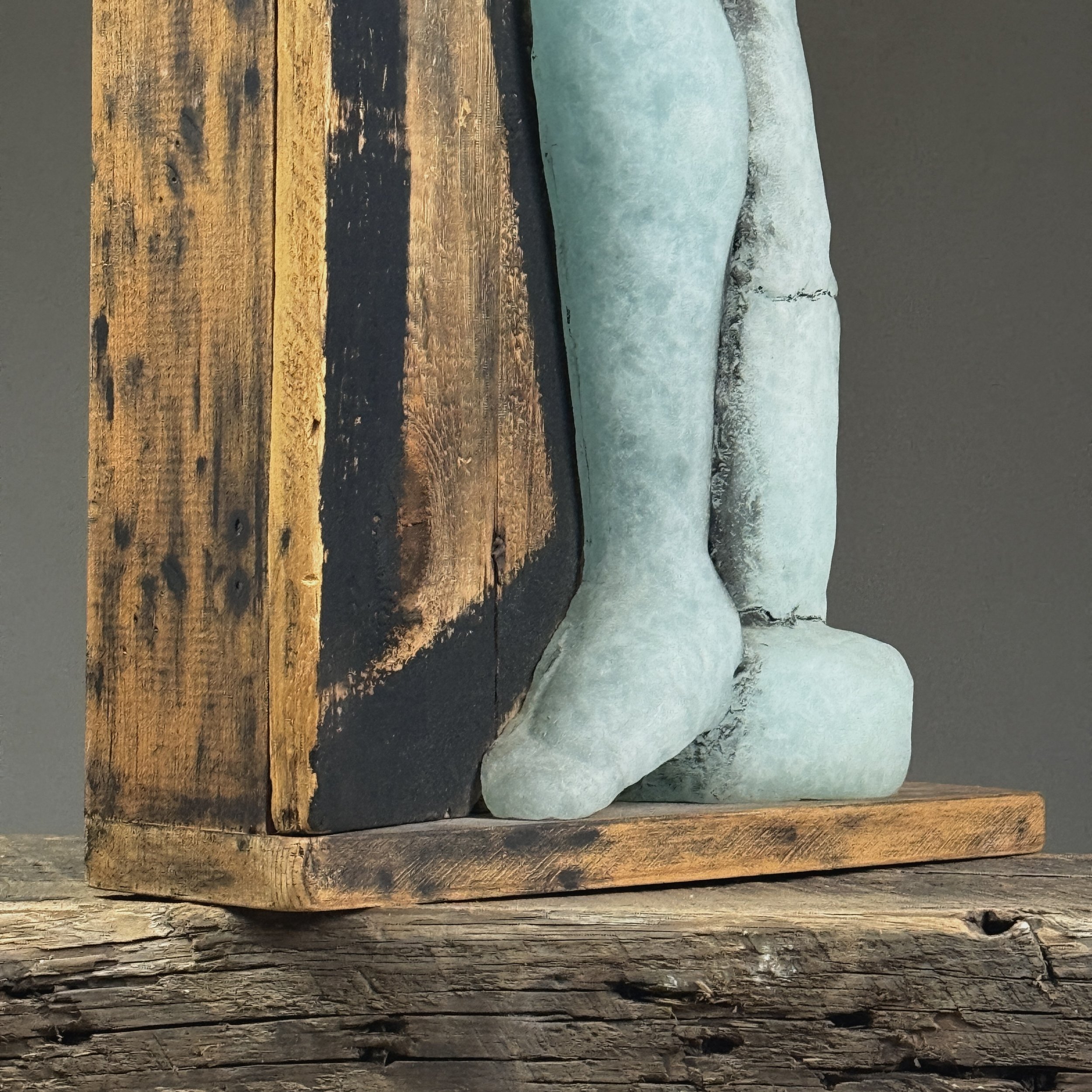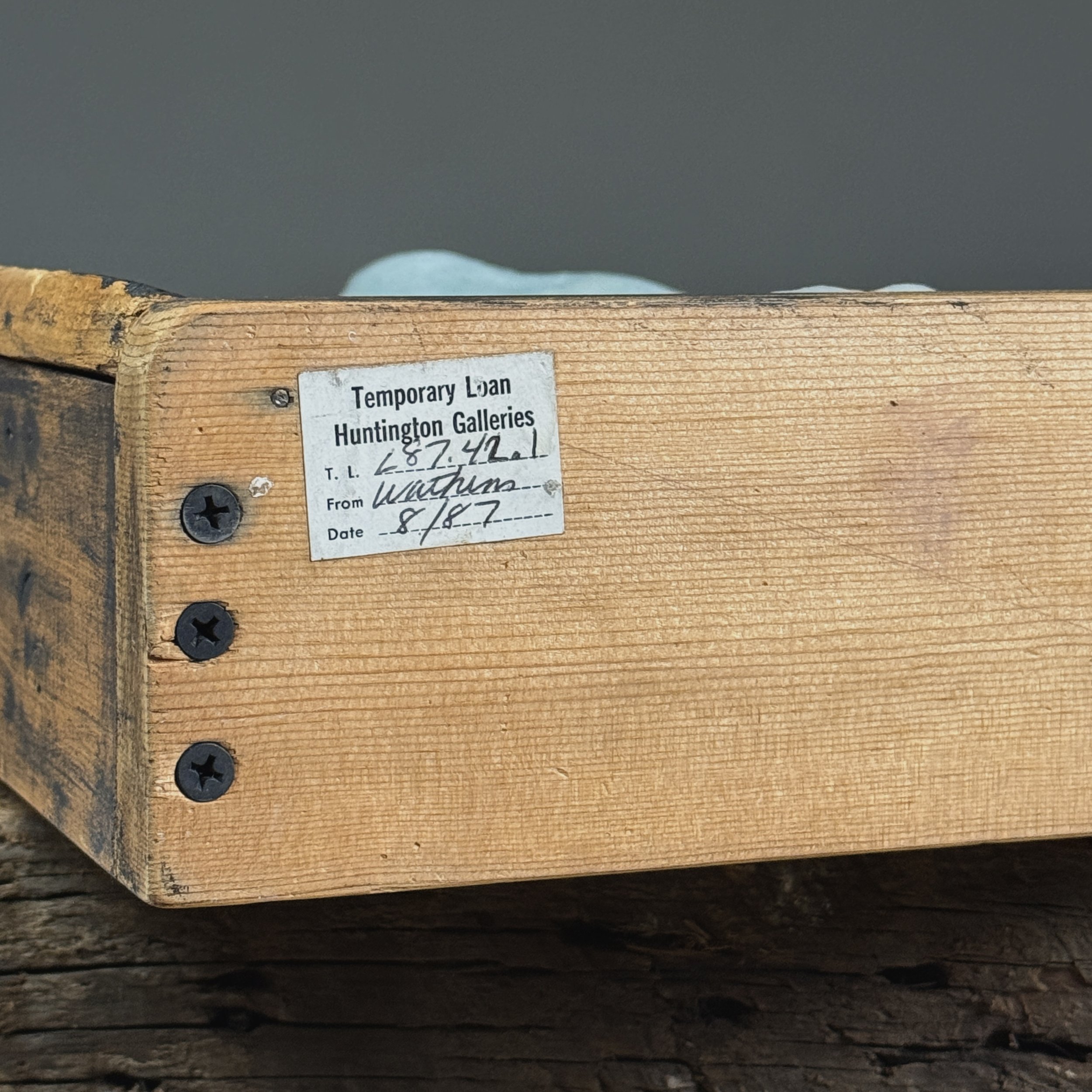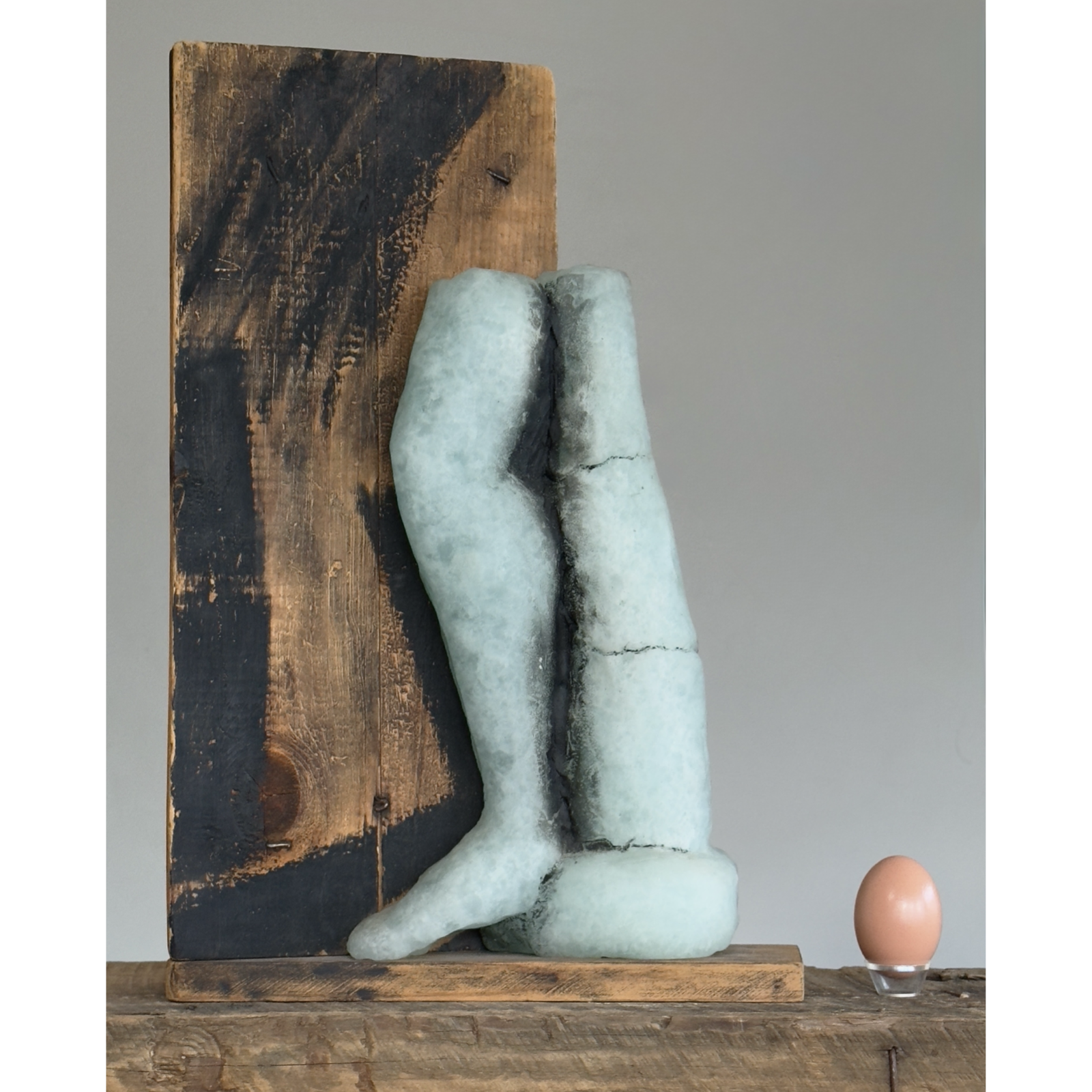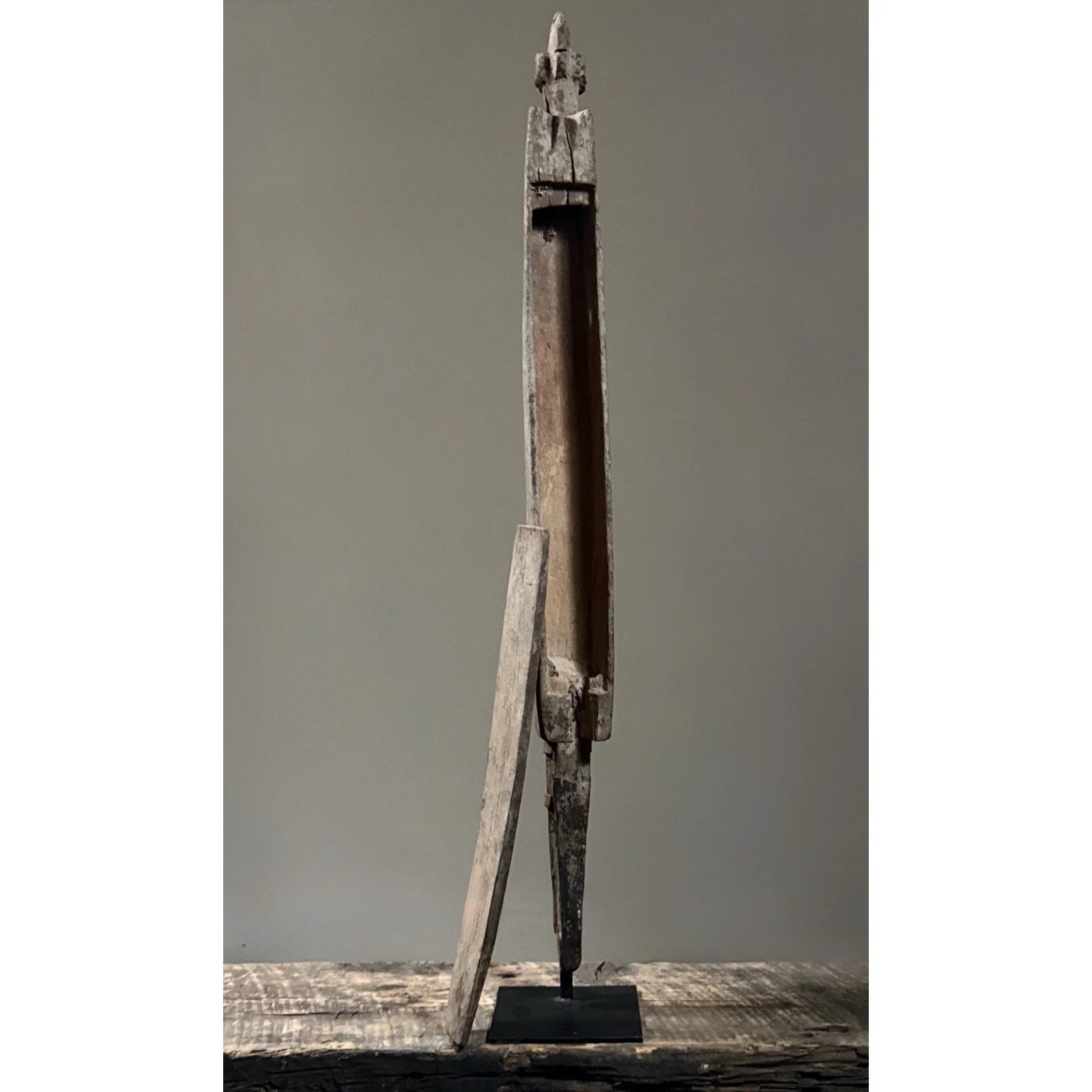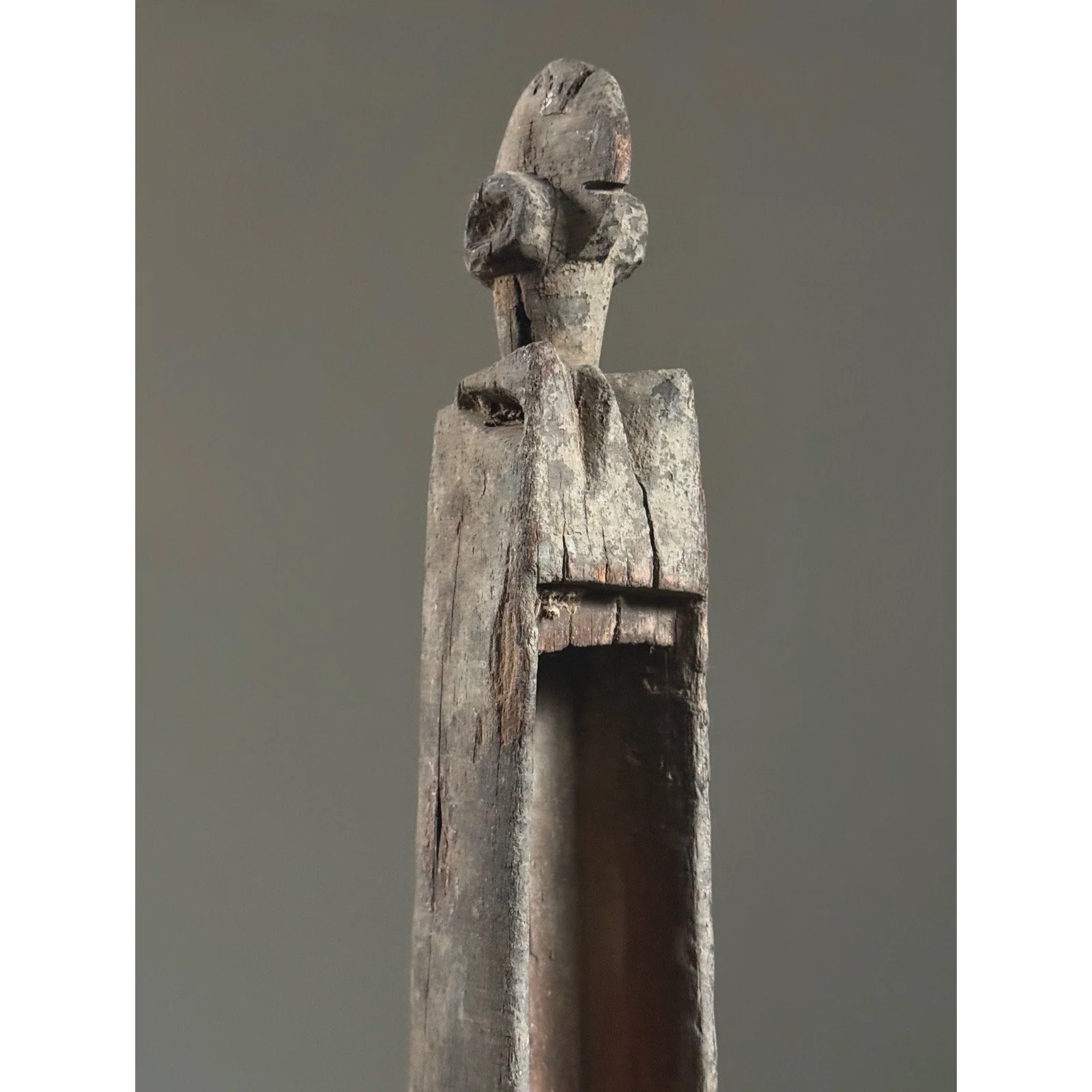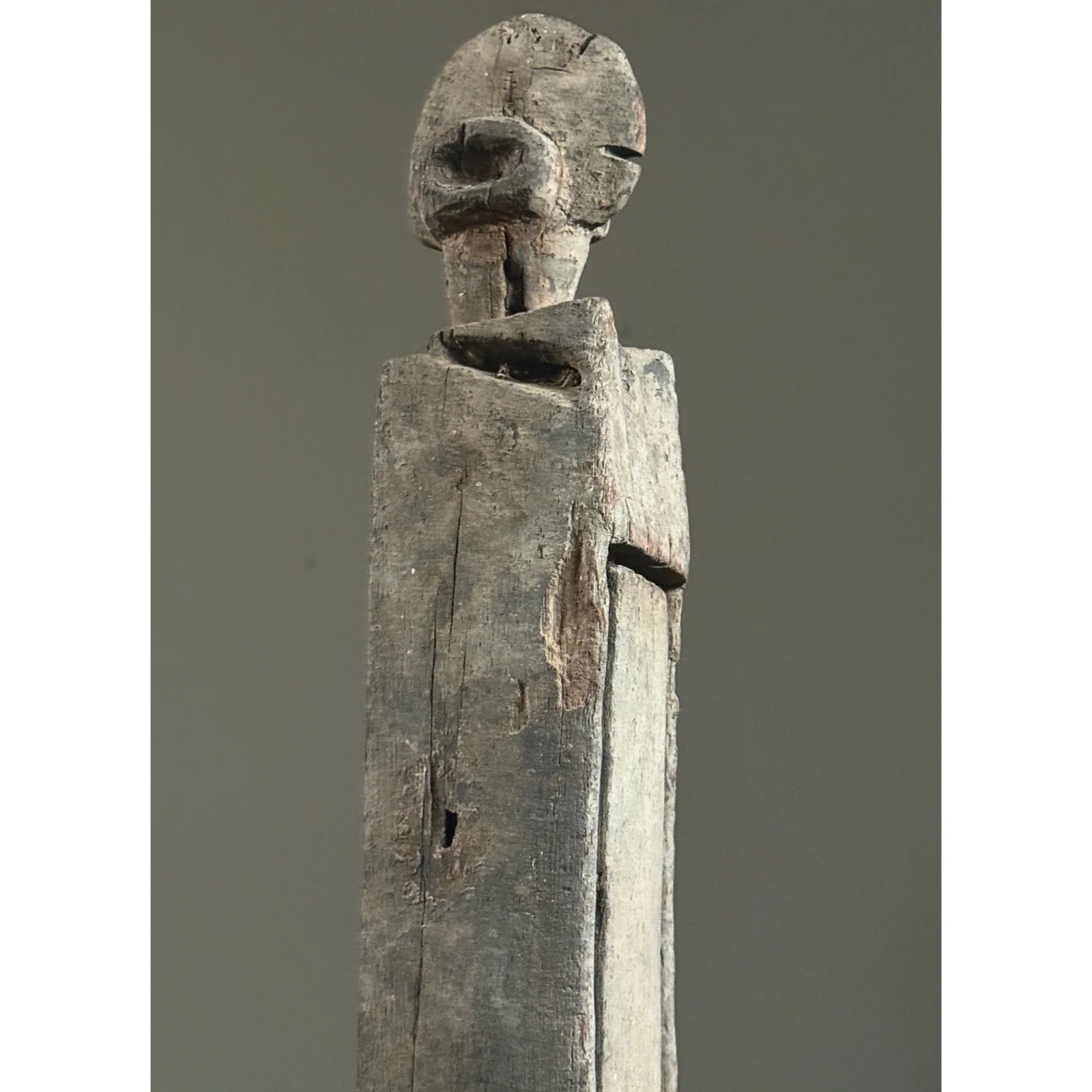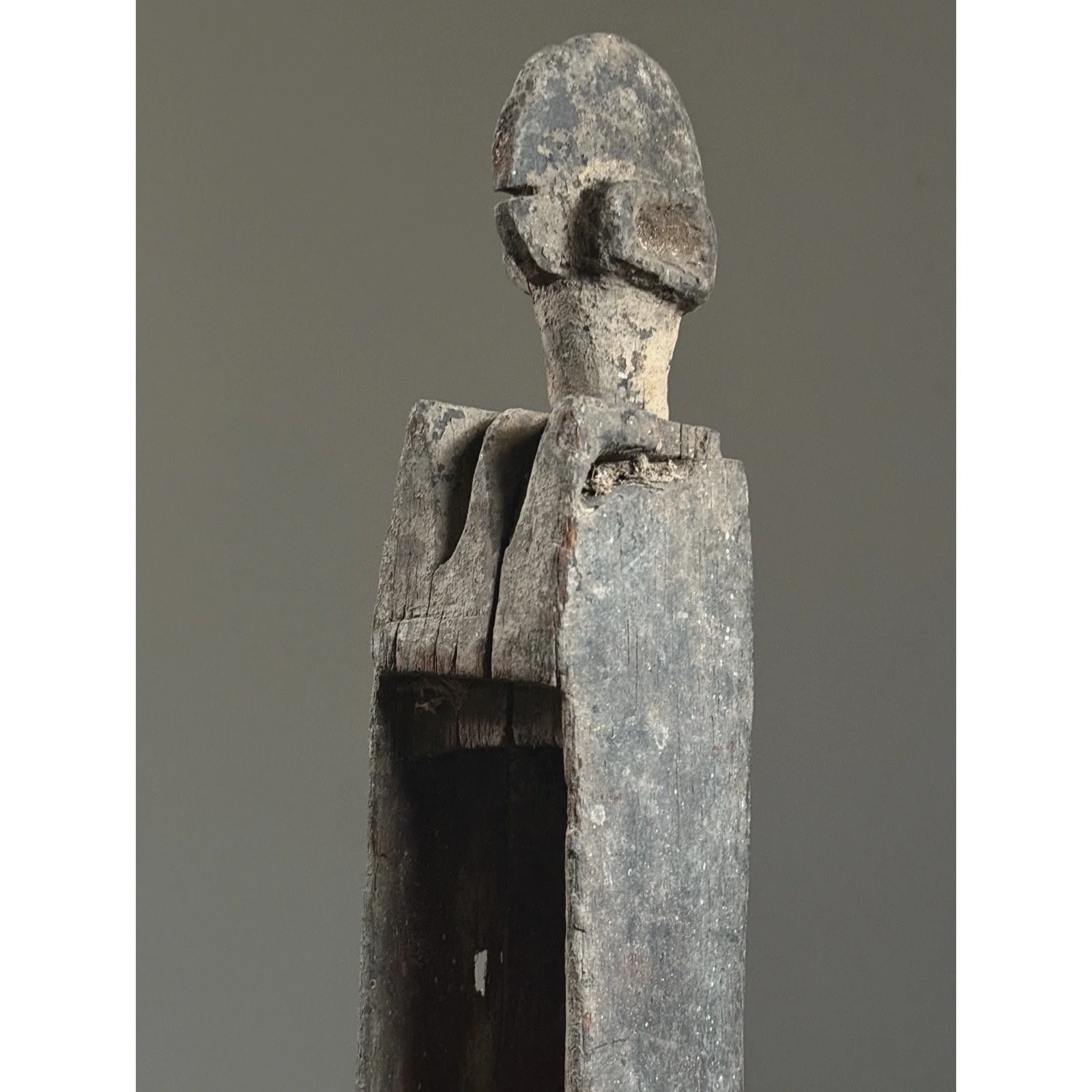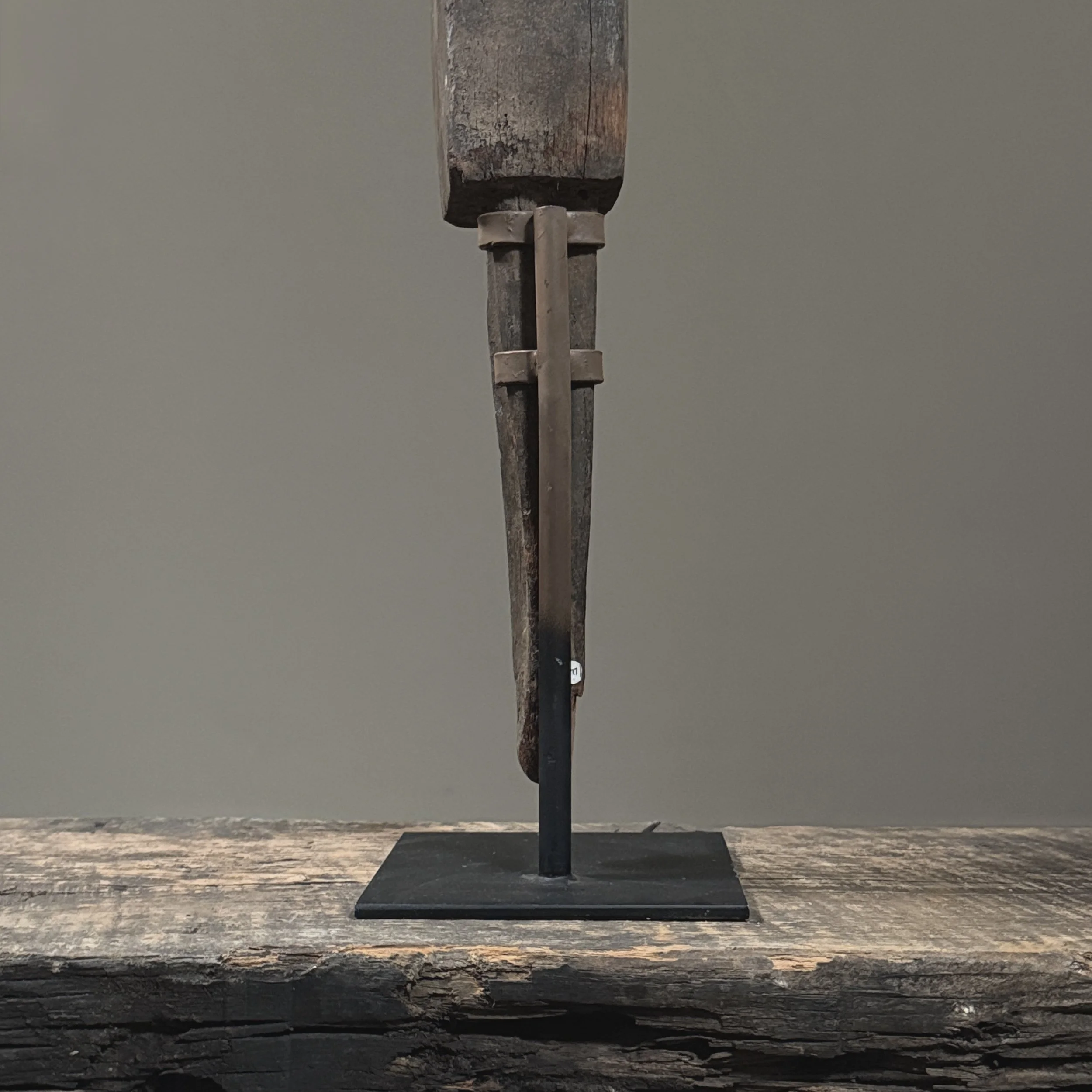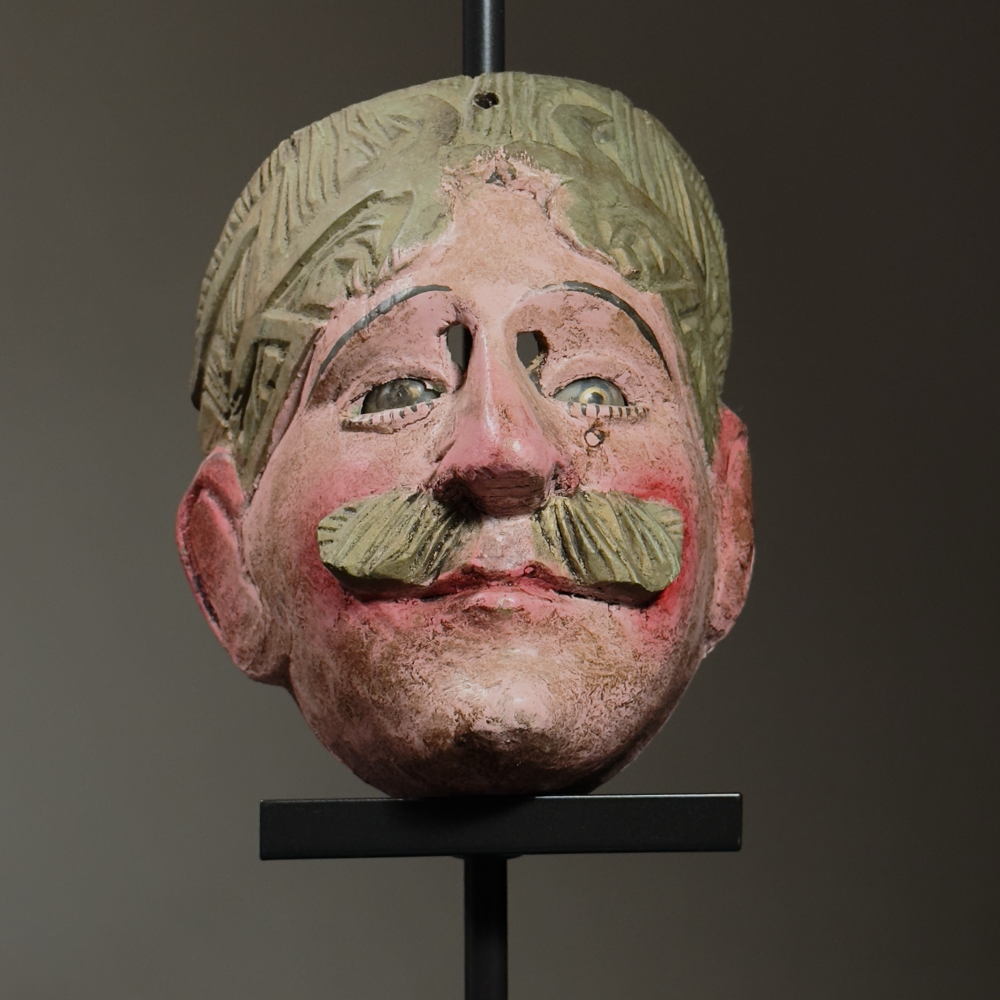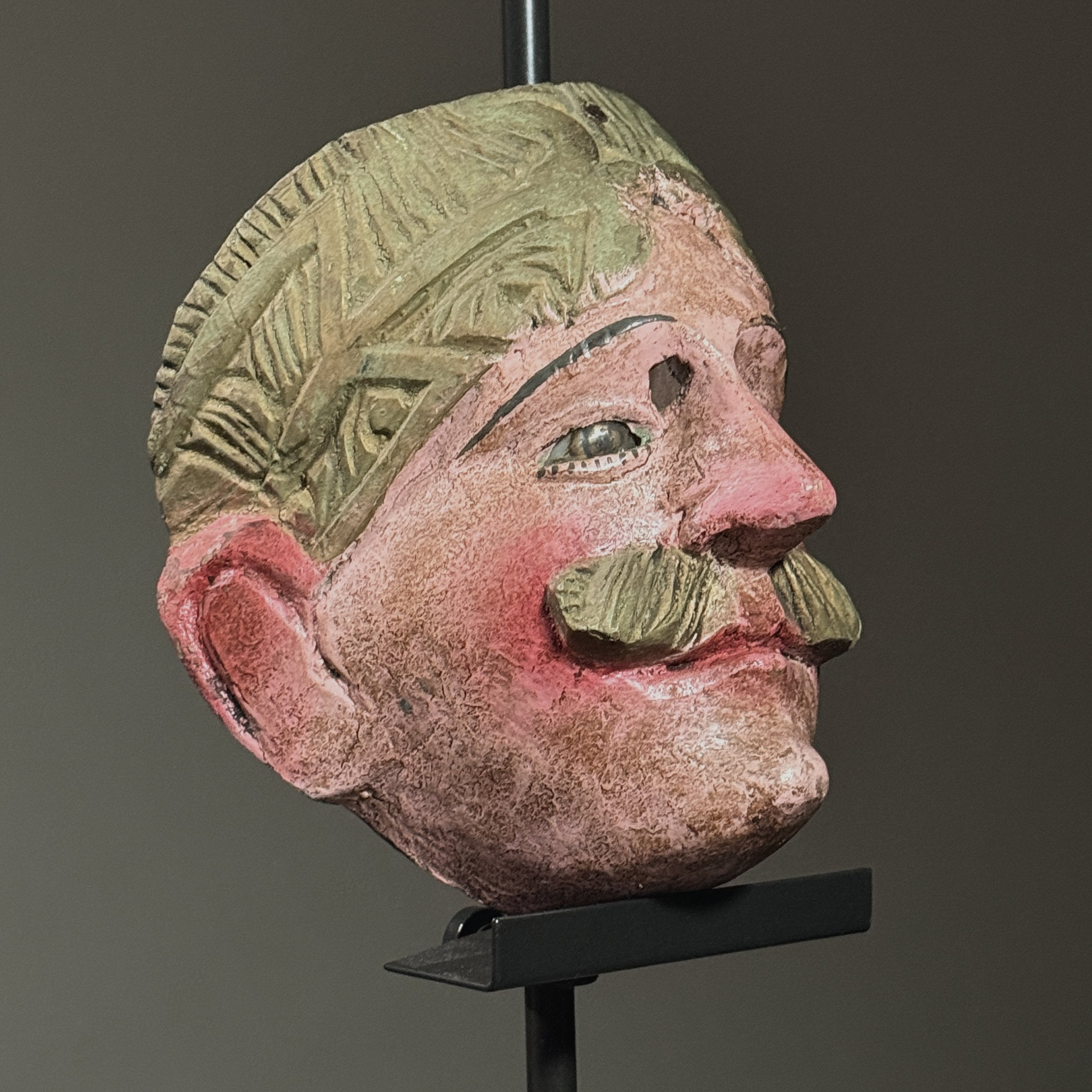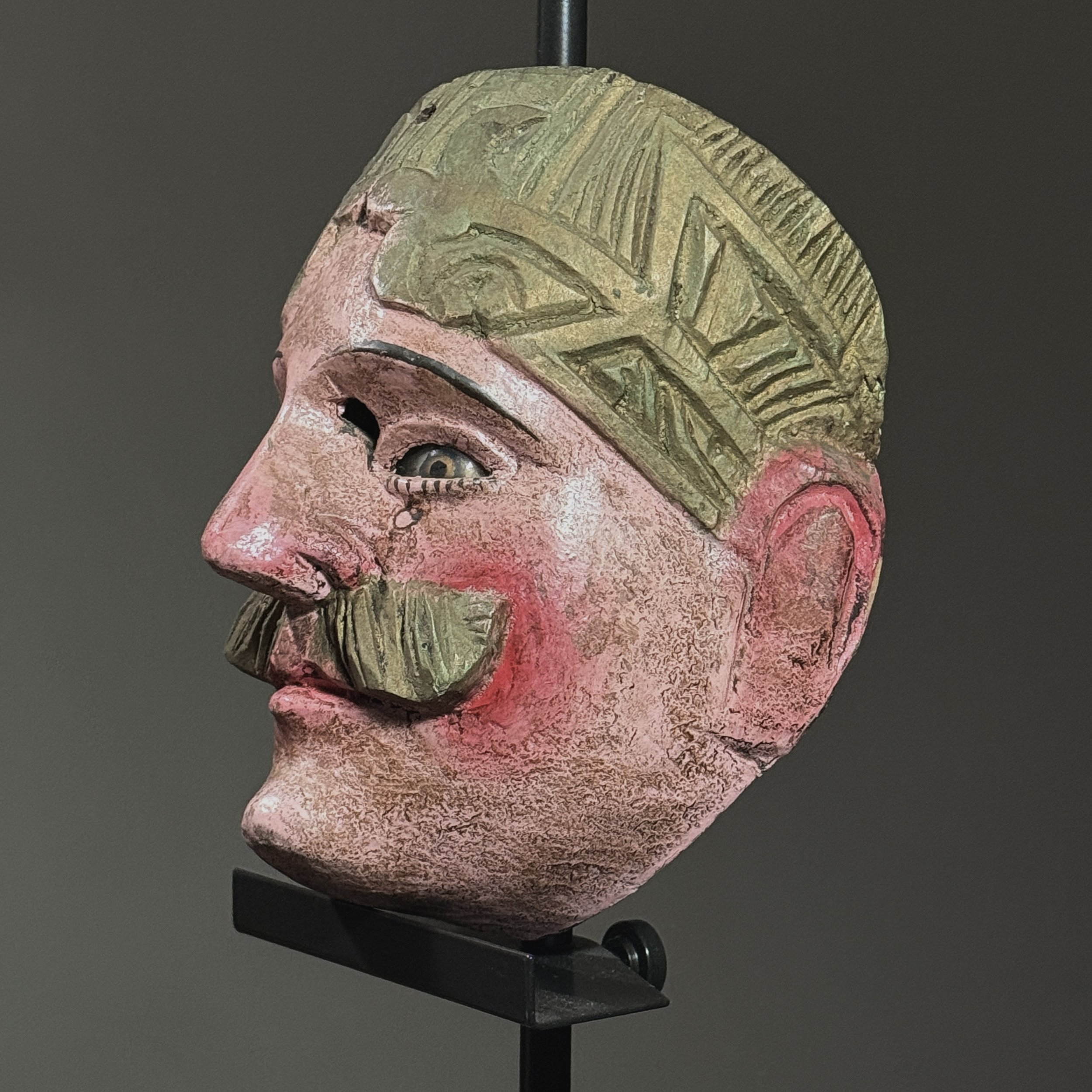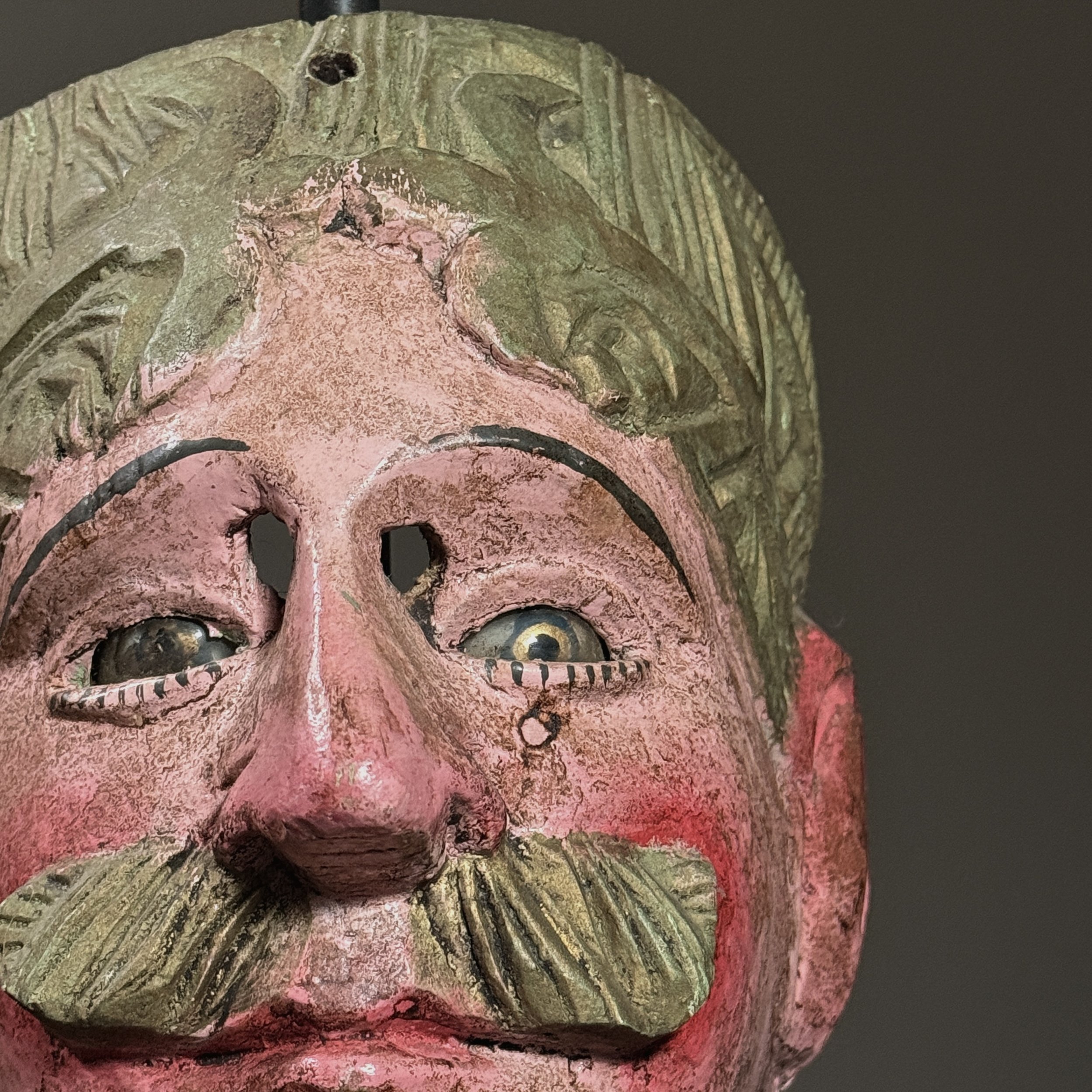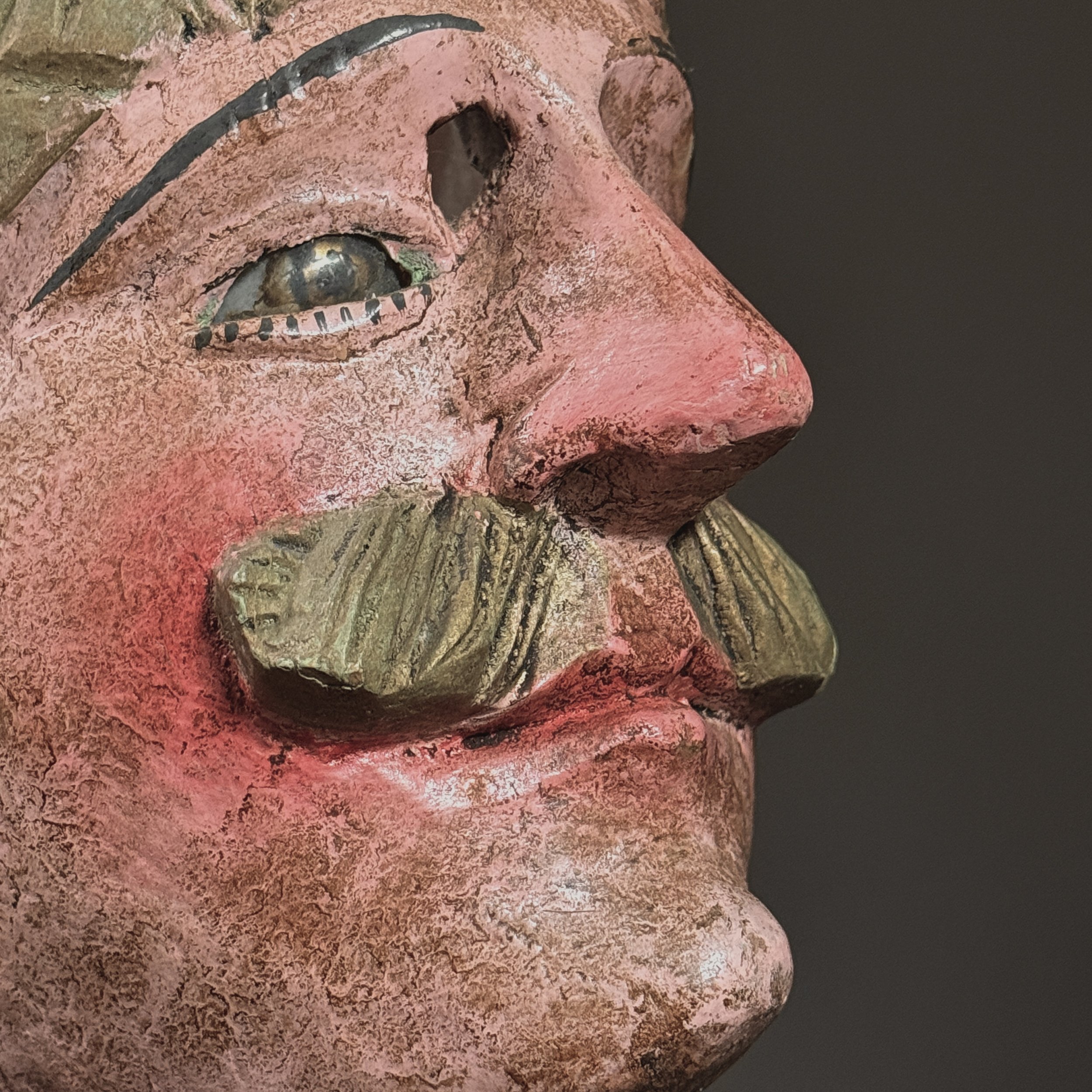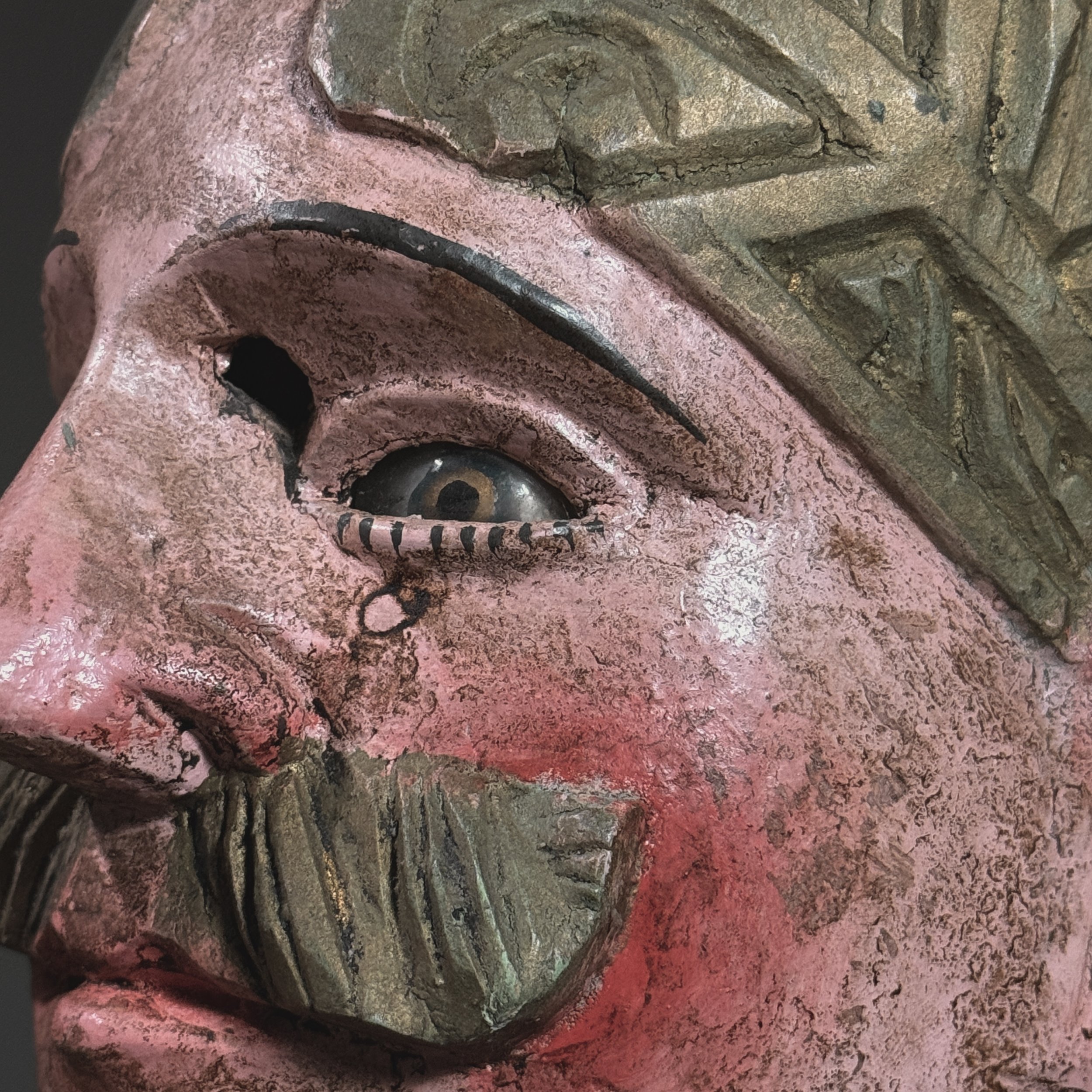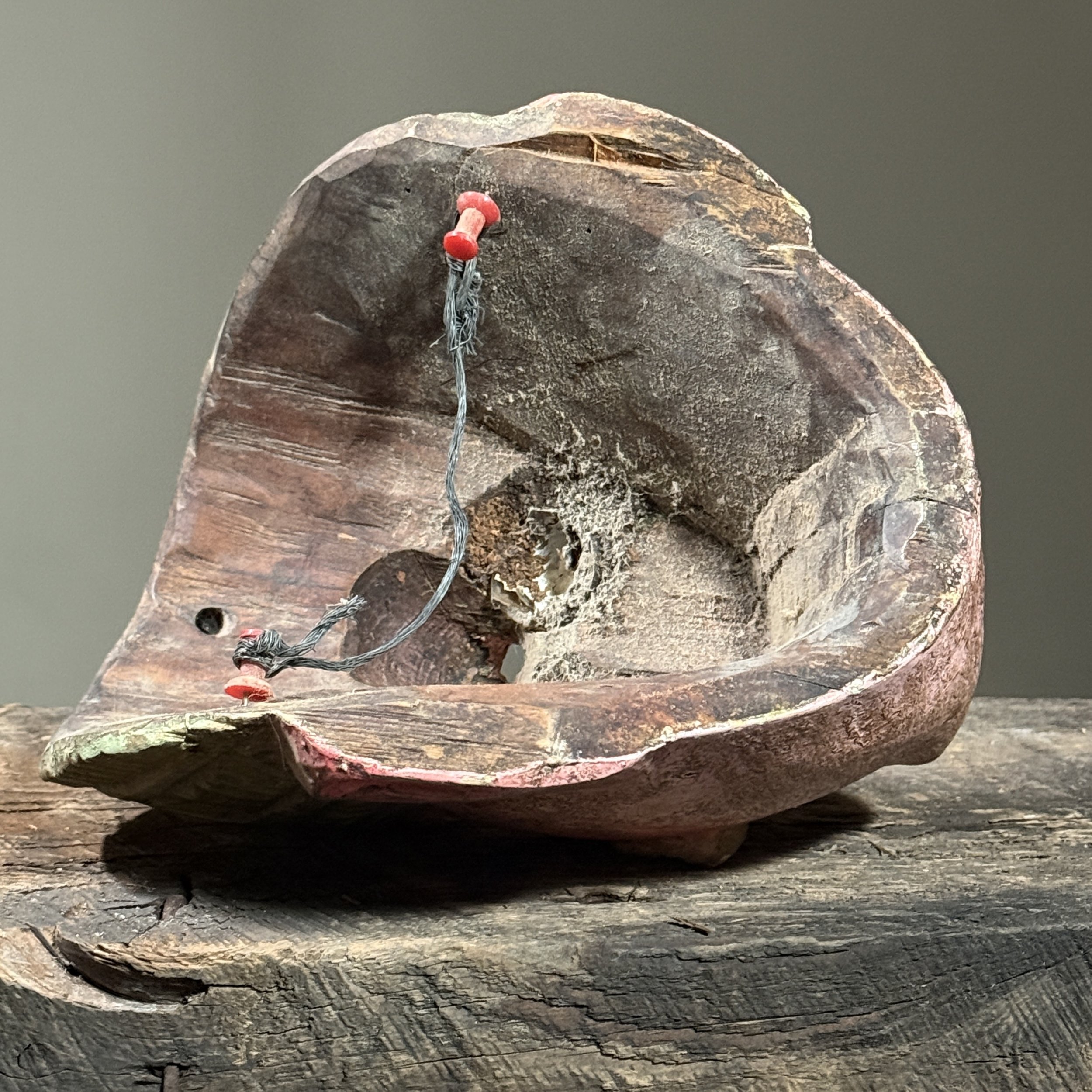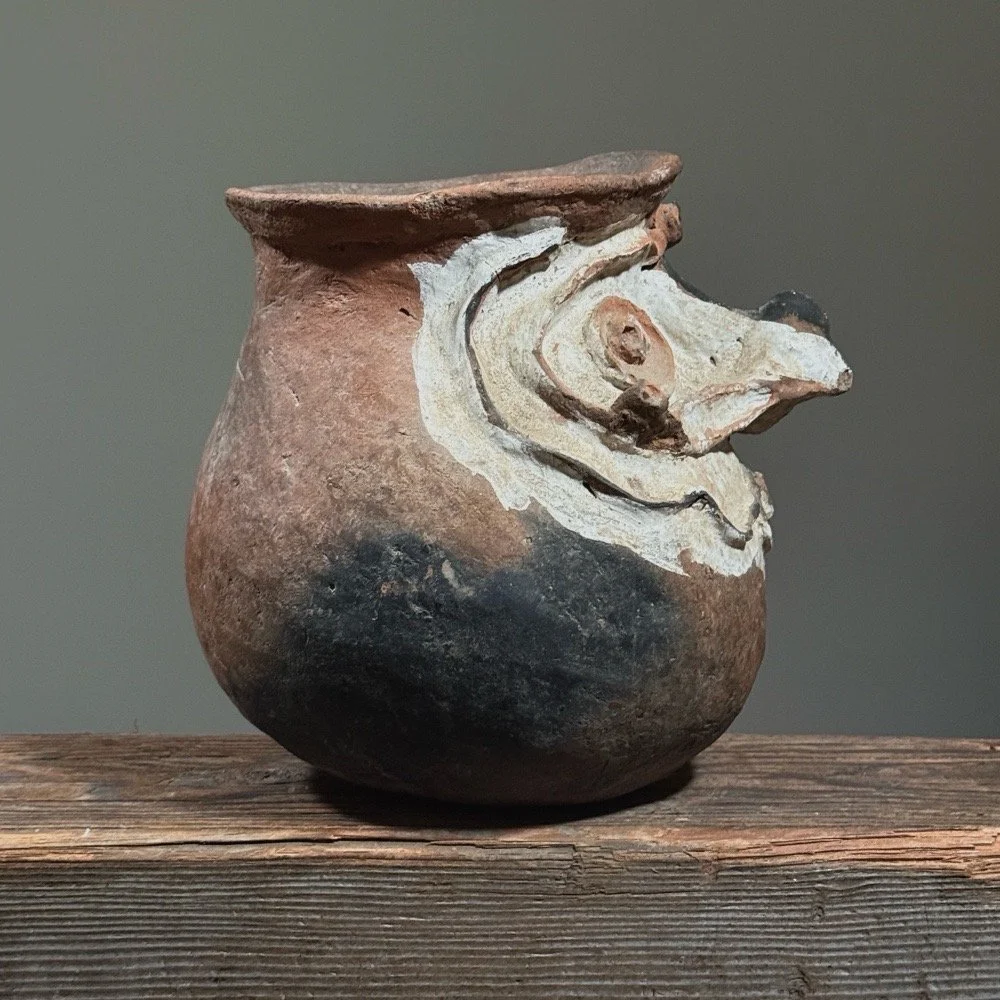 Image 1 of 10
Image 1 of 10

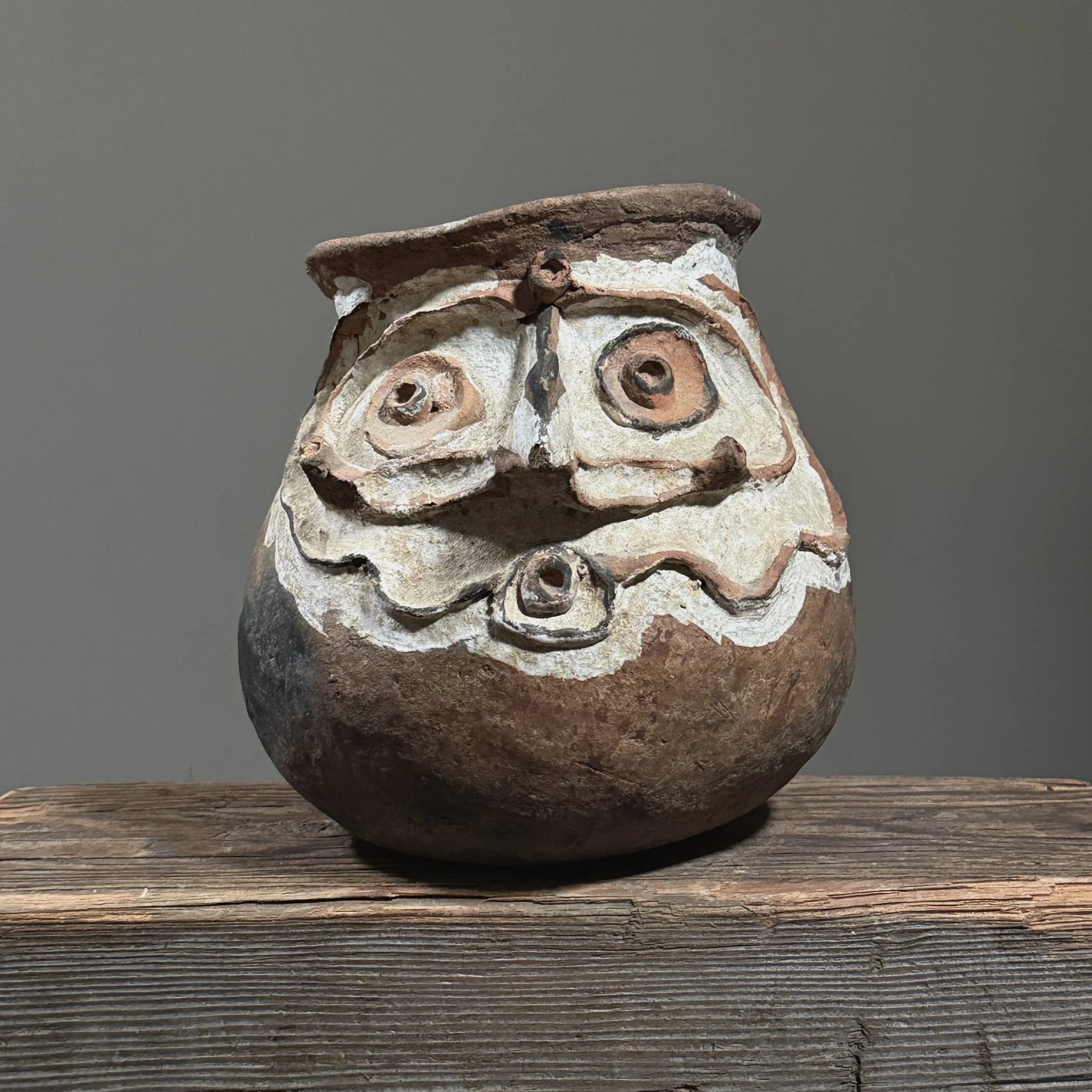 Image 2 of 10
Image 2 of 10

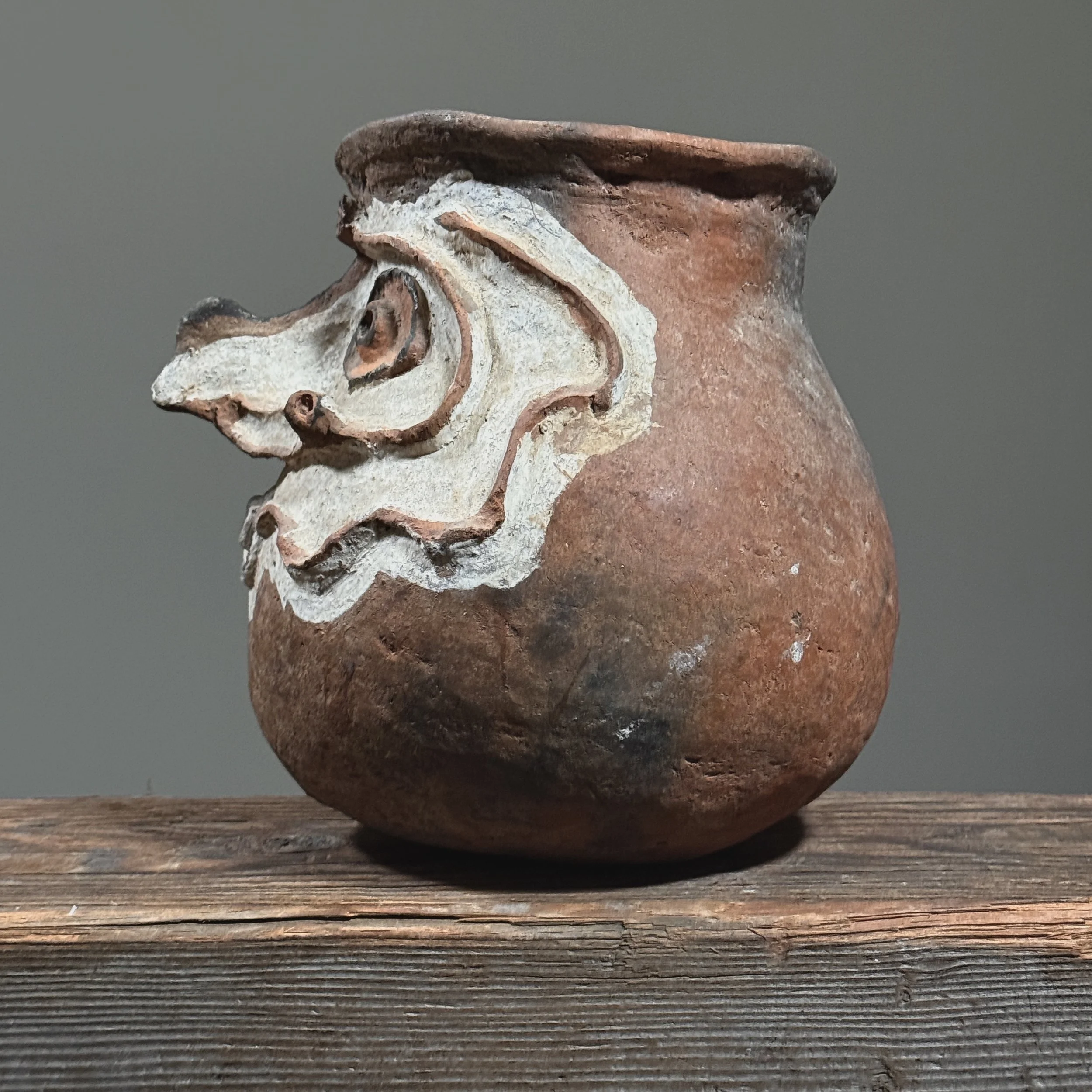 Image 3 of 10
Image 3 of 10

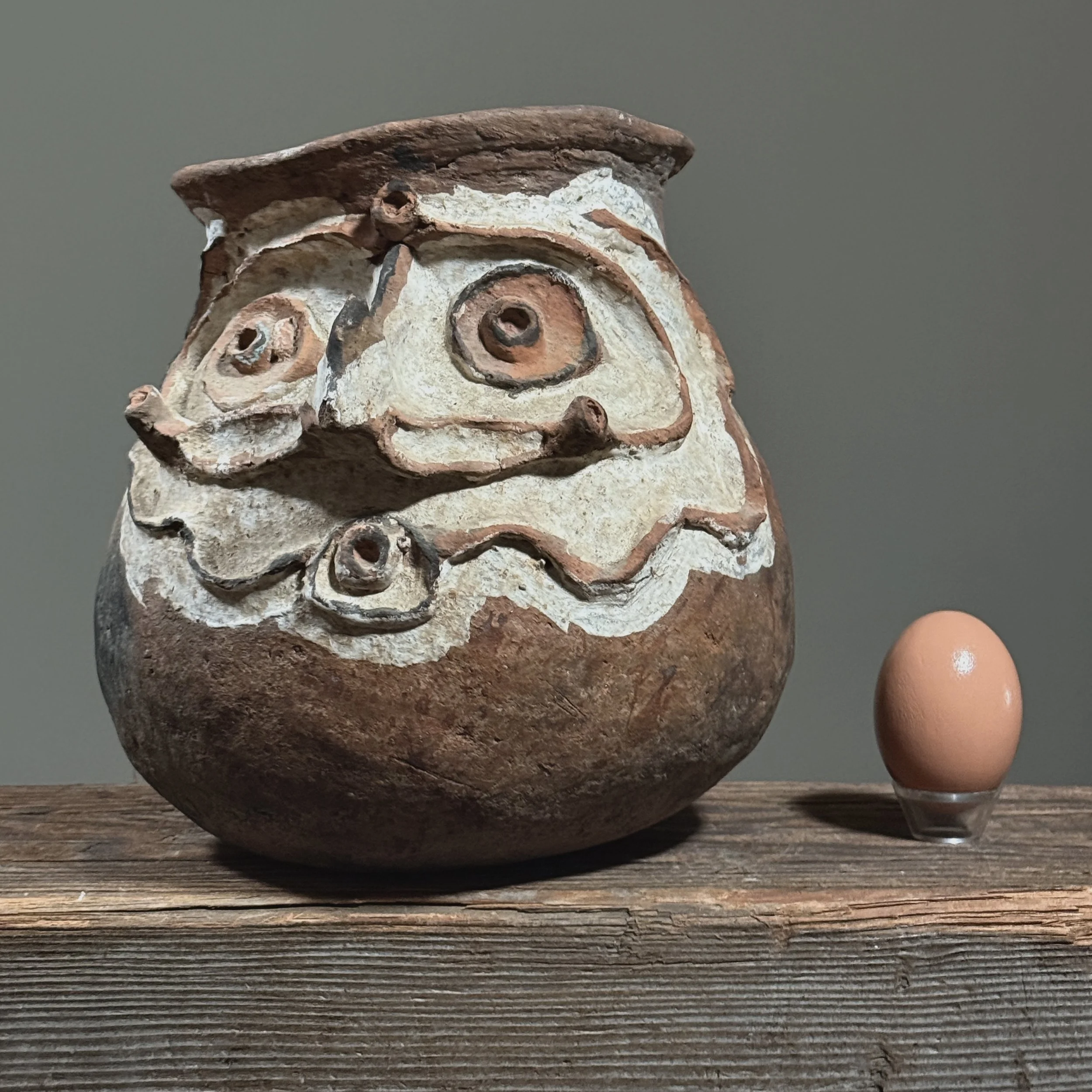 Image 4 of 10
Image 4 of 10

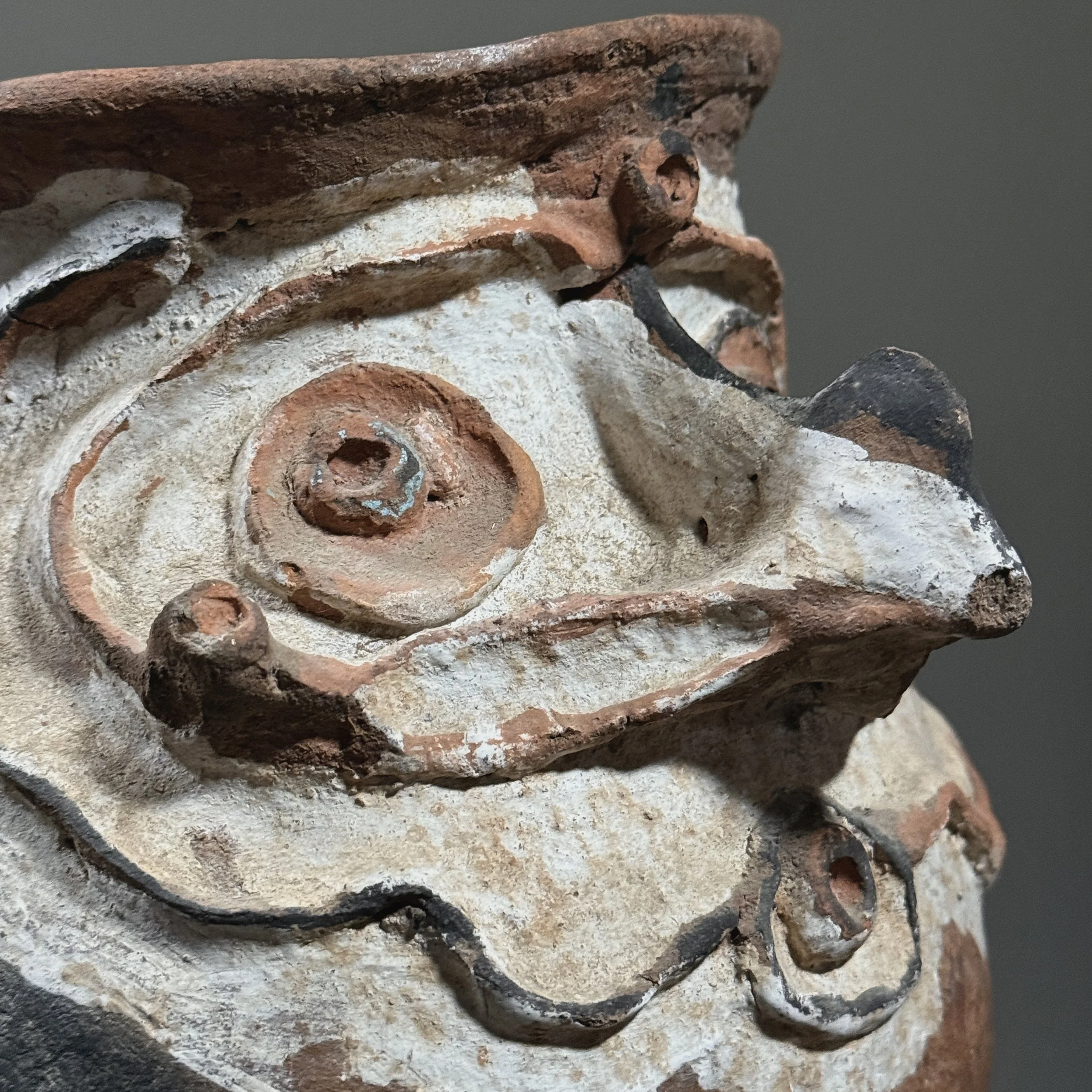 Image 5 of 10
Image 5 of 10

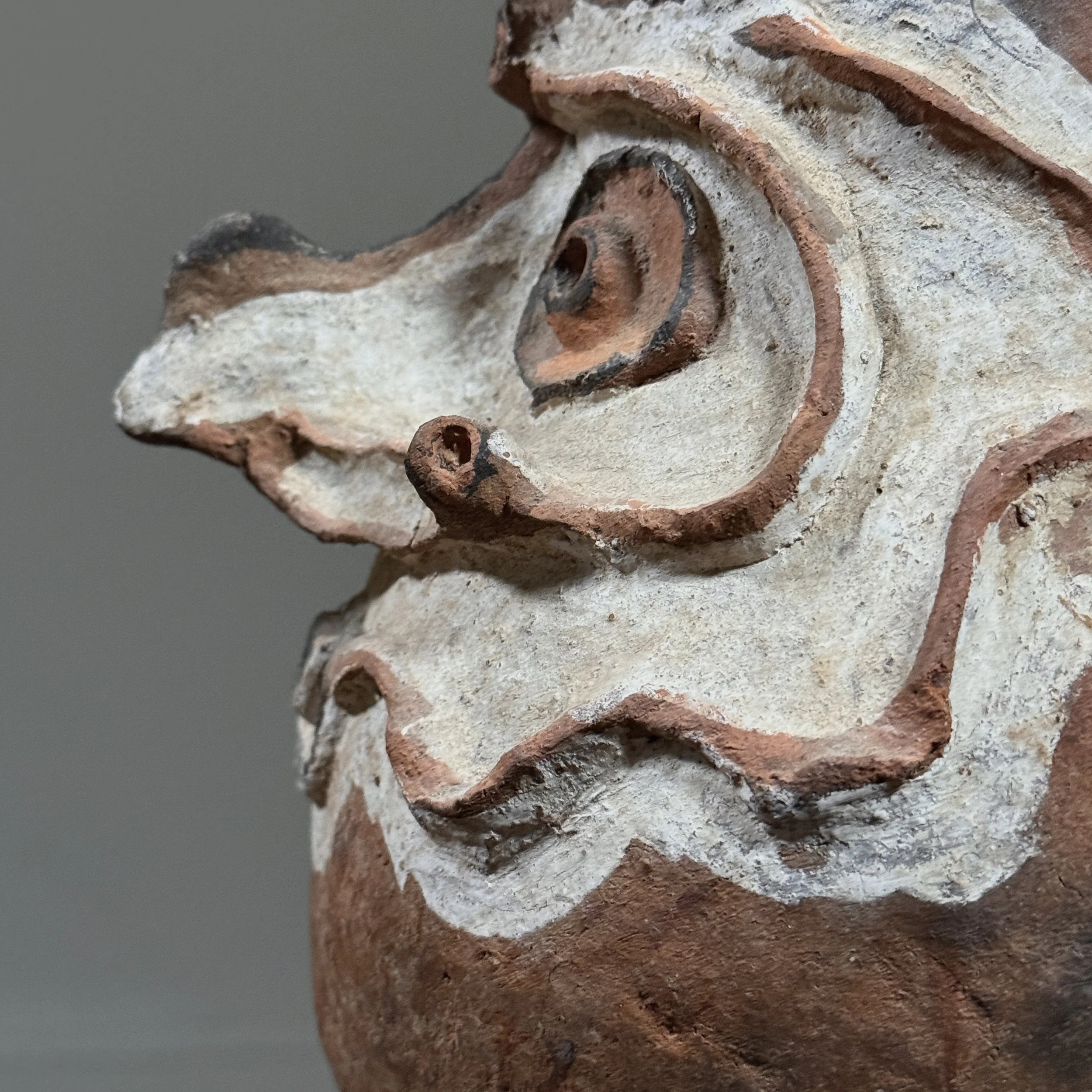 Image 6 of 10
Image 6 of 10

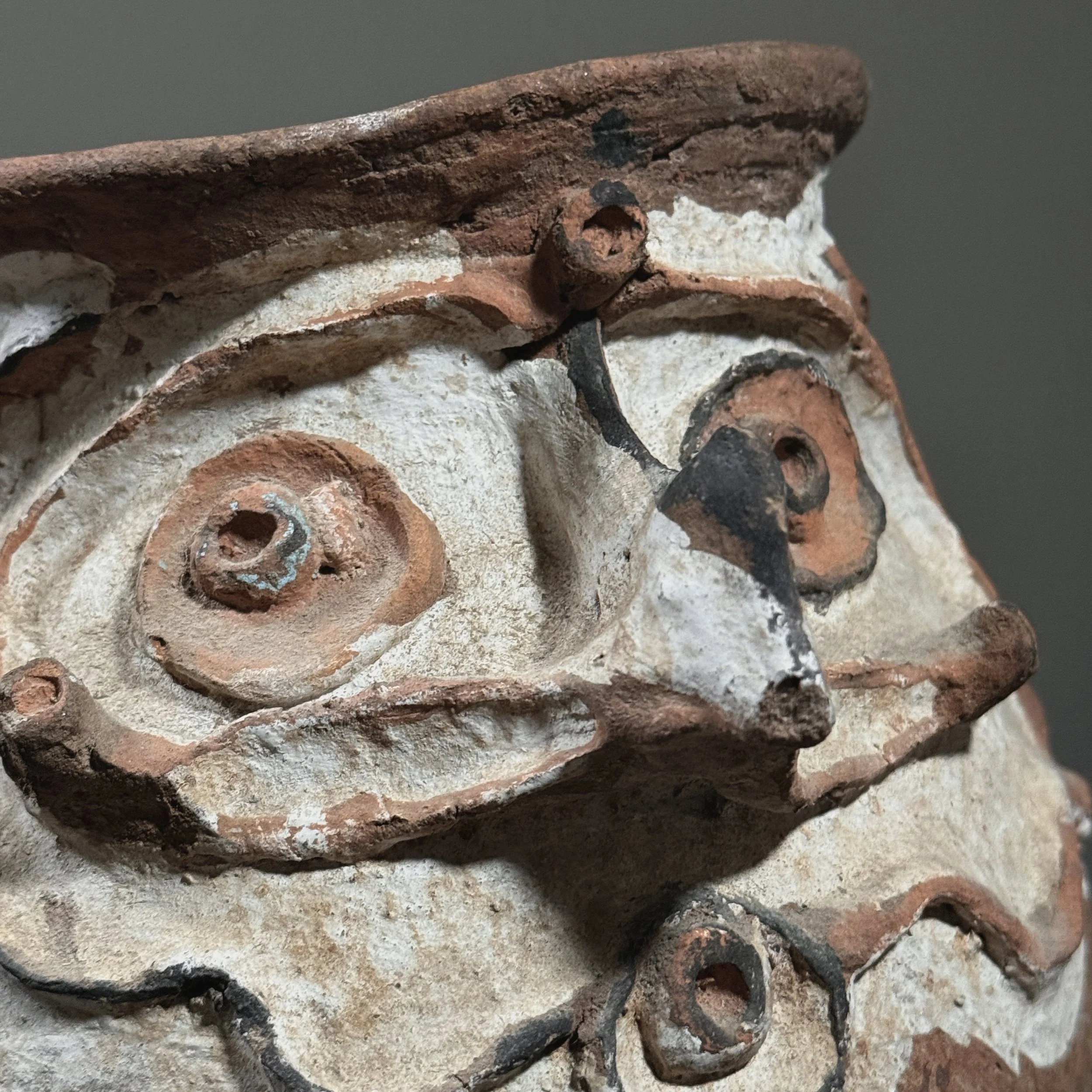 Image 7 of 10
Image 7 of 10

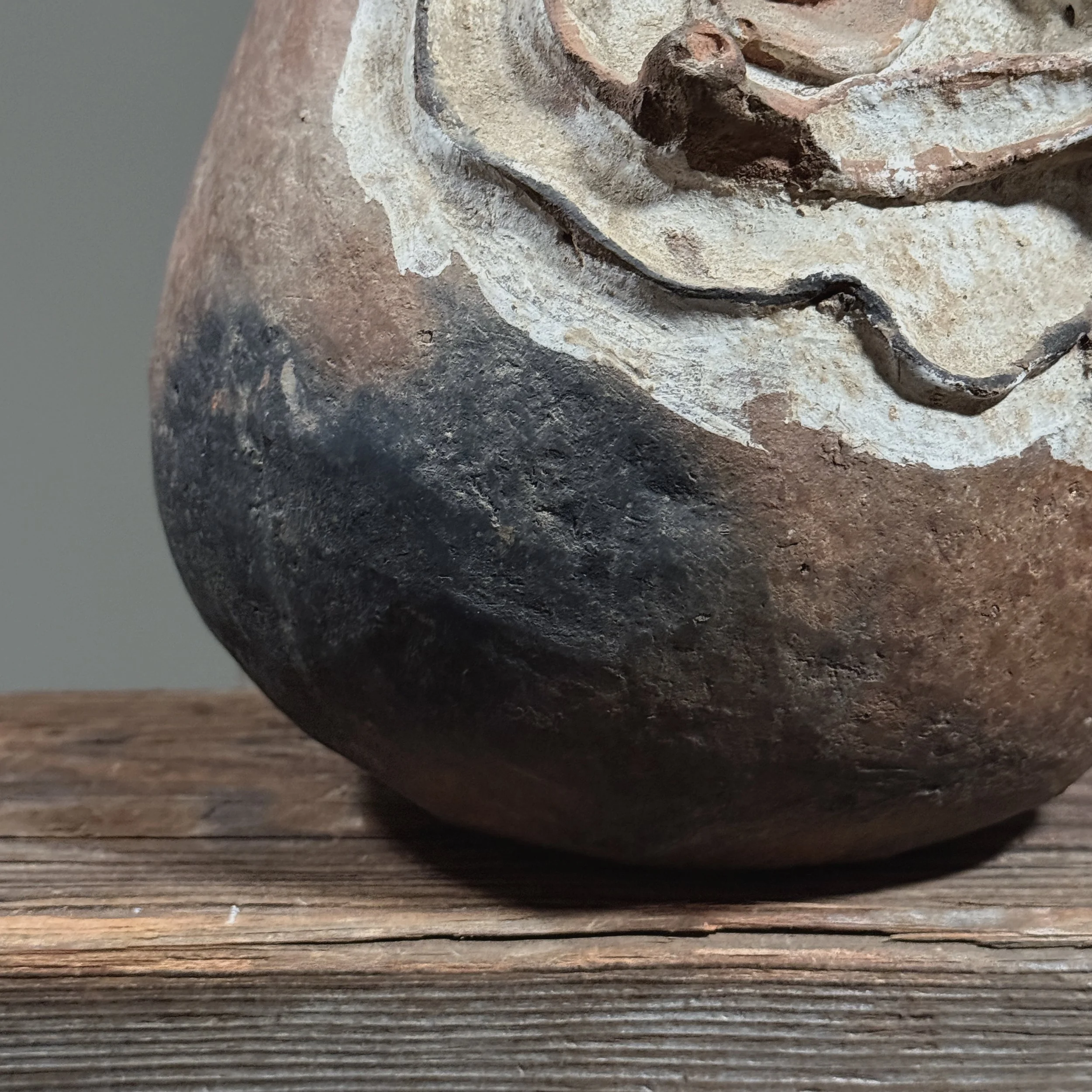 Image 8 of 10
Image 8 of 10

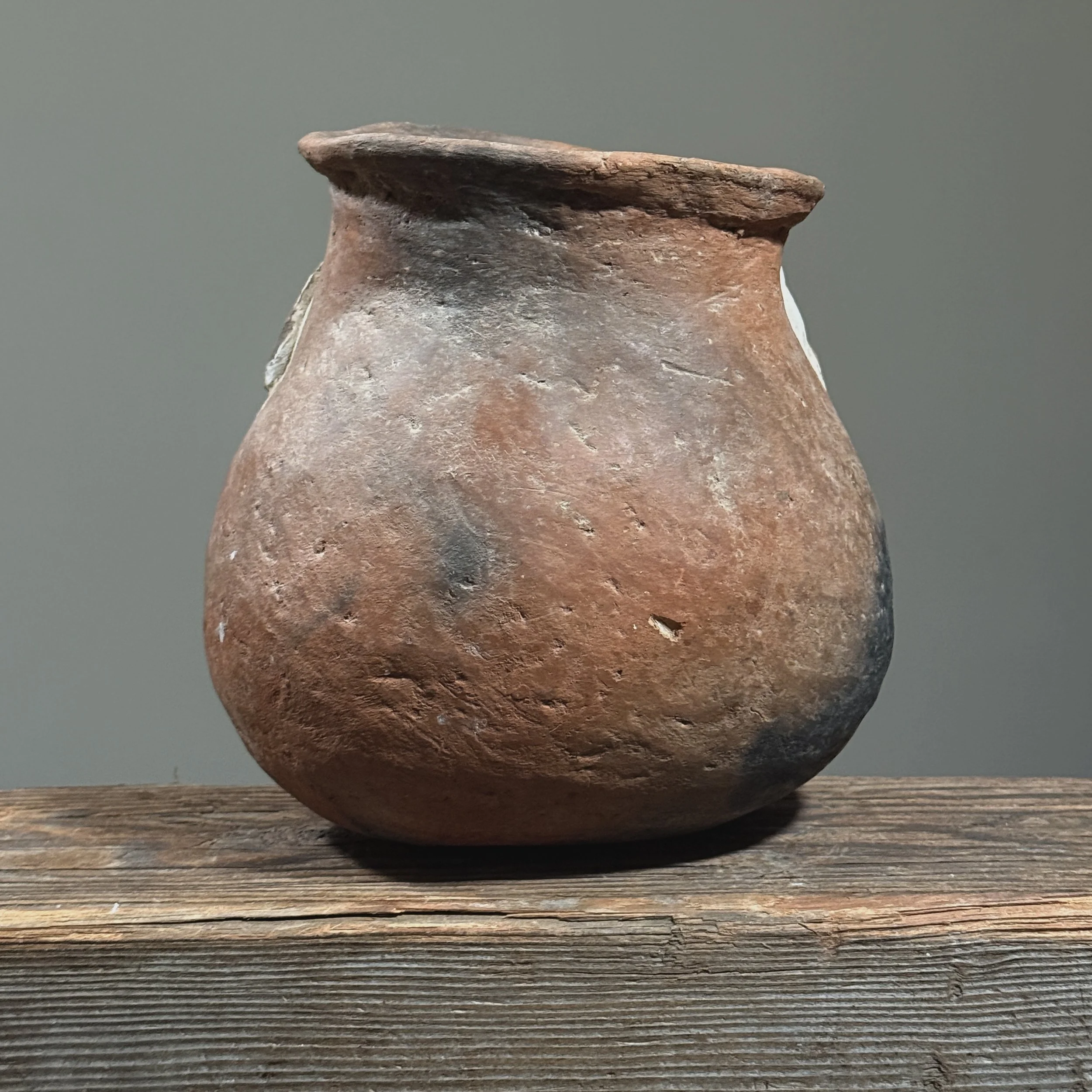 Image 9 of 10
Image 9 of 10

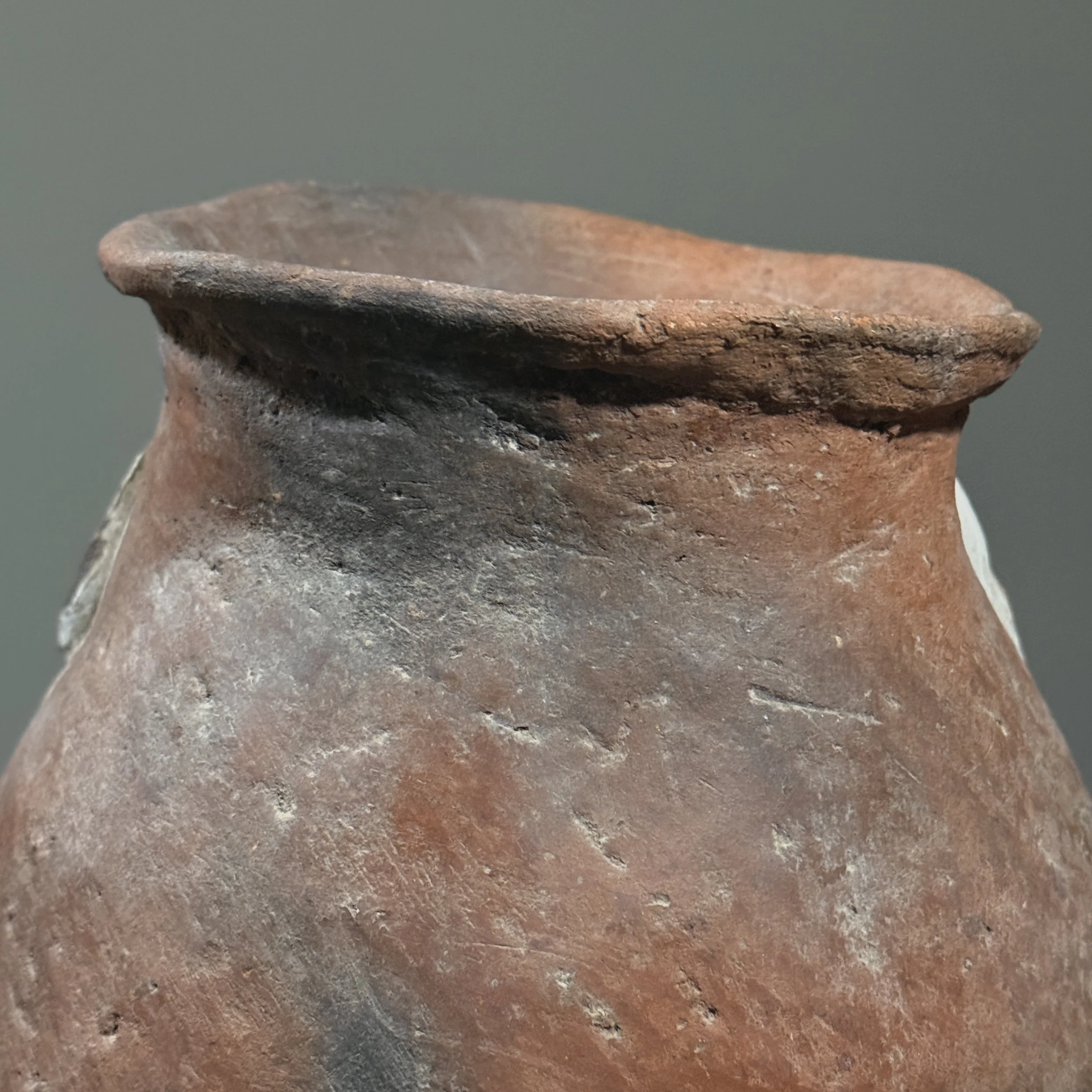 Image 10 of 10
Image 10 of 10











Anthropomorphic Folk Art Chambri Wood-Fired Polychrome Earthenware Damarau Vessel
Anthropomorphic Chambri Wood-Fired Polychrome Earthenware Damarau Vessel
Papua New Guinea, Aibom Village, Chambri Lakes Region
Mid-20th century
Wood-fired clay, natural pigments
Dimensions: 8.25”H × 9”D × 7.75”W
This anthropomorphic damarau vessel represents the ceramic tradition of the Chambri (Aibom) people of the Sepik River region in Papua New Guinea. Hand-built using coiling techniques and locally sourced clay from pits near Aibom Mountain, the vessel features a modeled human face. Its flared rim and rounded body suggest its utilitarian role in storing smoked sago—a dietary staple in the Sepik basin.
The vessel’s coloration results from wood firing, with natural clay tones mixed with fire markings. Decorative elements are typically created through clay fillets and mineral slip painting in red, black, and white. While Chambri women traditionally formed the vessels, men historically shaped anthropomorphic details and applied painted decoration—a practice now occasionally shared by women artisans, especially in works intended for trade.
Chambri pottery is central to domestic and ritual life, serving both practical and exchange purposes. Aibom potters’ works were historically traded along the Sepik River for goods such as dried fish, sago flour, betel nut, and woven skirts.
Condition: Exhibits wear and surface irregularities consistent with age and traditional use. Please refer to photos for details.
Anthropomorphic Chambri Wood-Fired Polychrome Earthenware Damarau Vessel
Papua New Guinea, Aibom Village, Chambri Lakes Region
Mid-20th century
Wood-fired clay, natural pigments
Dimensions: 8.25”H × 9”D × 7.75”W
This anthropomorphic damarau vessel represents the ceramic tradition of the Chambri (Aibom) people of the Sepik River region in Papua New Guinea. Hand-built using coiling techniques and locally sourced clay from pits near Aibom Mountain, the vessel features a modeled human face. Its flared rim and rounded body suggest its utilitarian role in storing smoked sago—a dietary staple in the Sepik basin.
The vessel’s coloration results from wood firing, with natural clay tones mixed with fire markings. Decorative elements are typically created through clay fillets and mineral slip painting in red, black, and white. While Chambri women traditionally formed the vessels, men historically shaped anthropomorphic details and applied painted decoration—a practice now occasionally shared by women artisans, especially in works intended for trade.
Chambri pottery is central to domestic and ritual life, serving both practical and exchange purposes. Aibom potters’ works were historically traded along the Sepik River for goods such as dried fish, sago flour, betel nut, and woven skirts.
Condition: Exhibits wear and surface irregularities consistent with age and traditional use. Please refer to photos for details.

